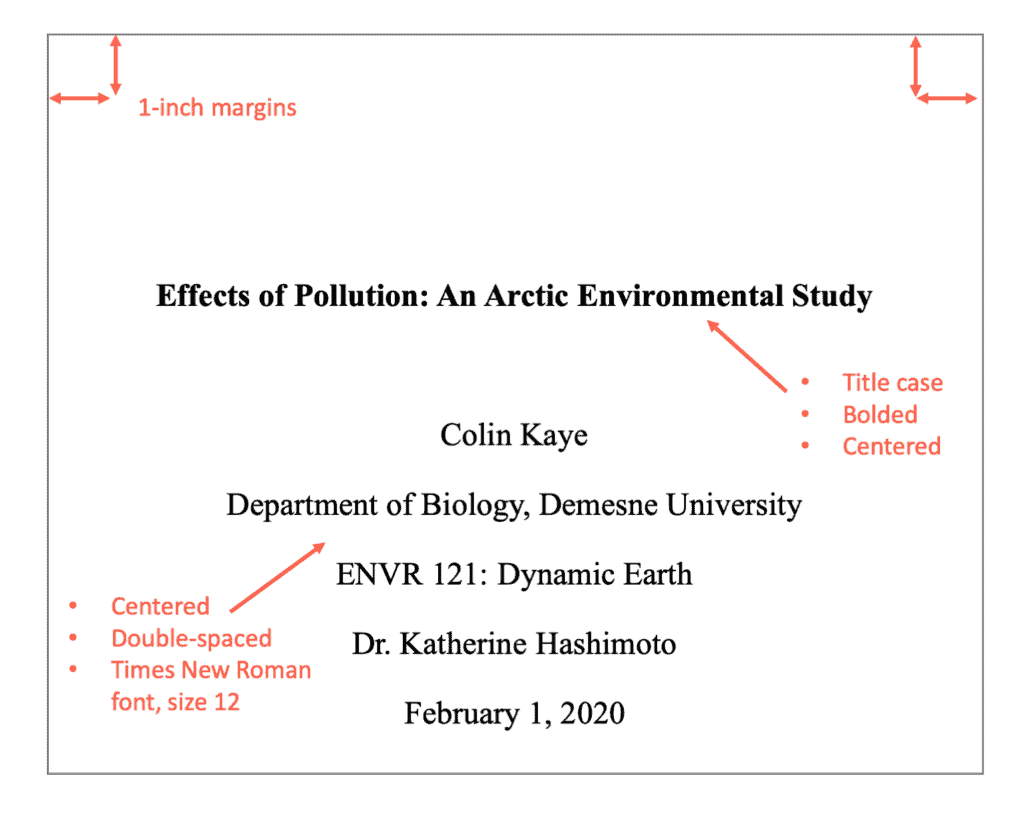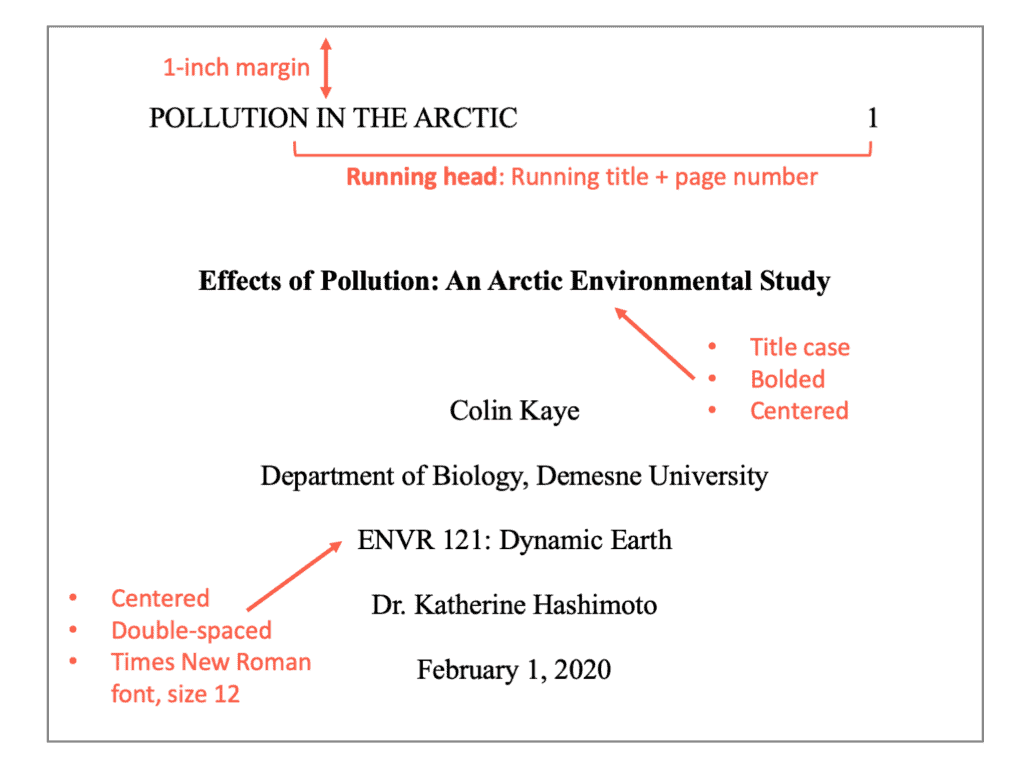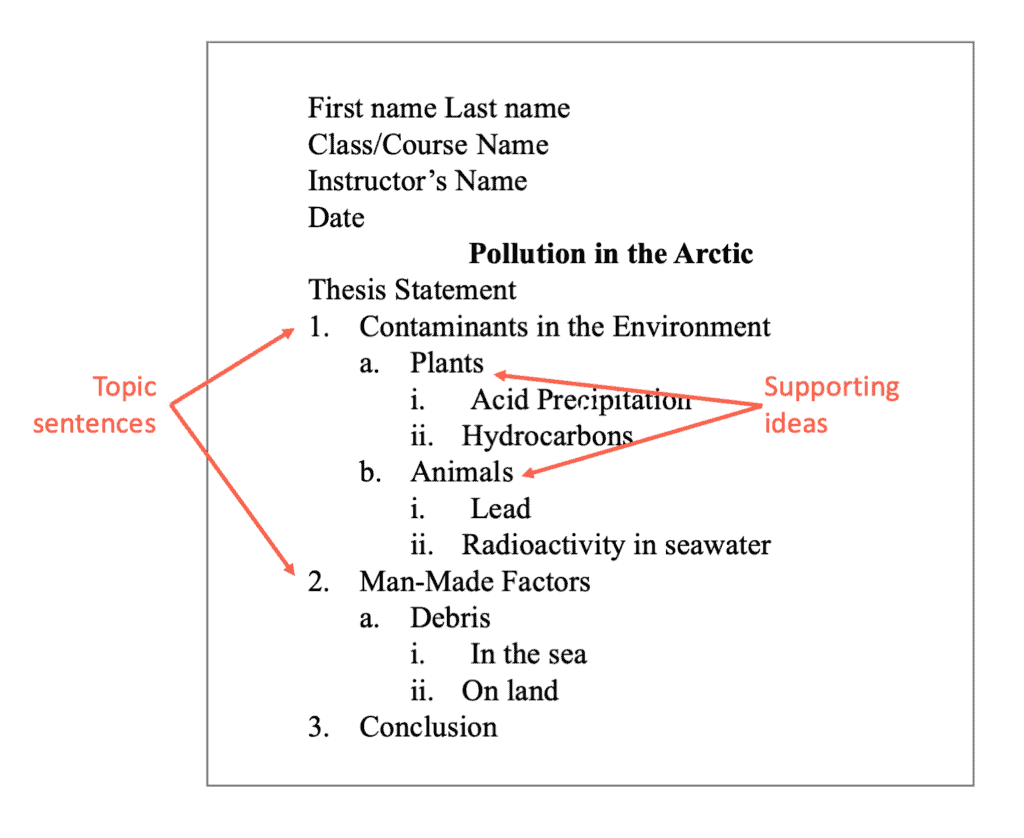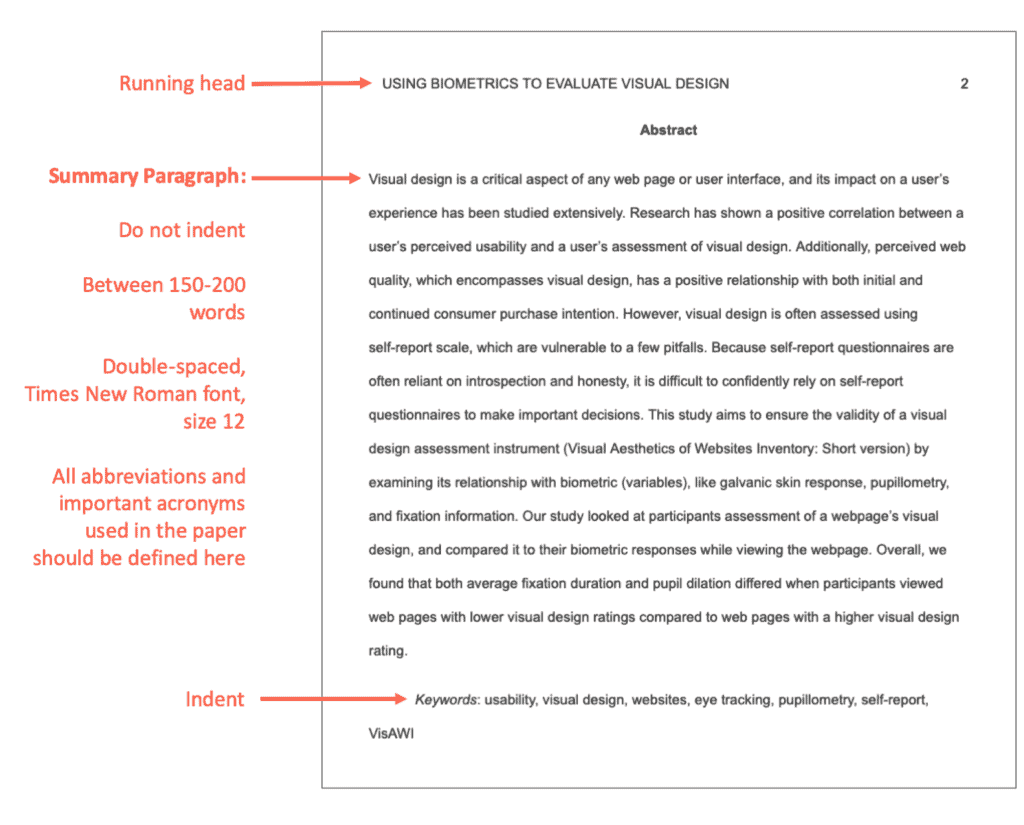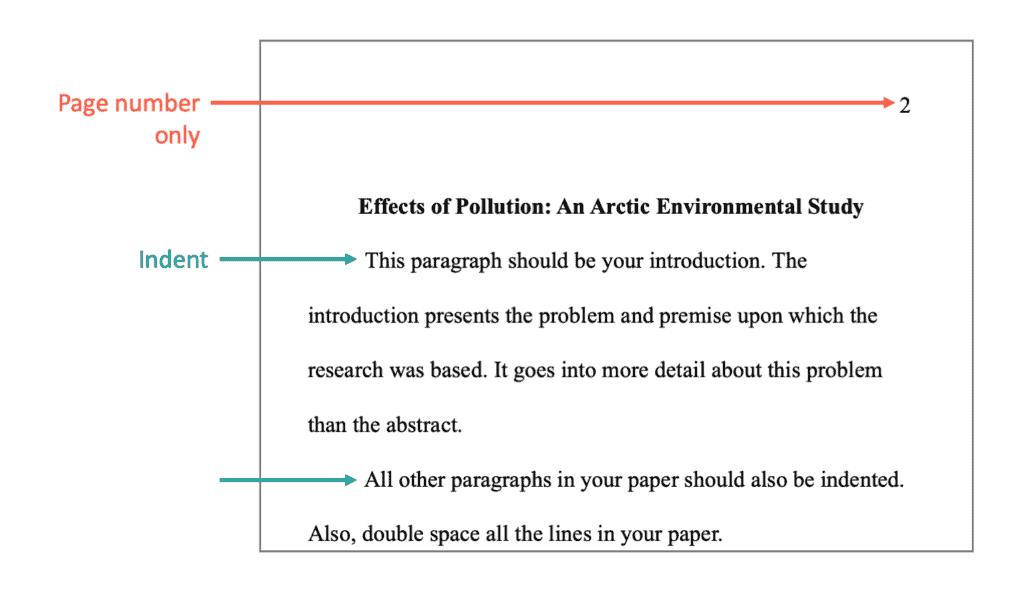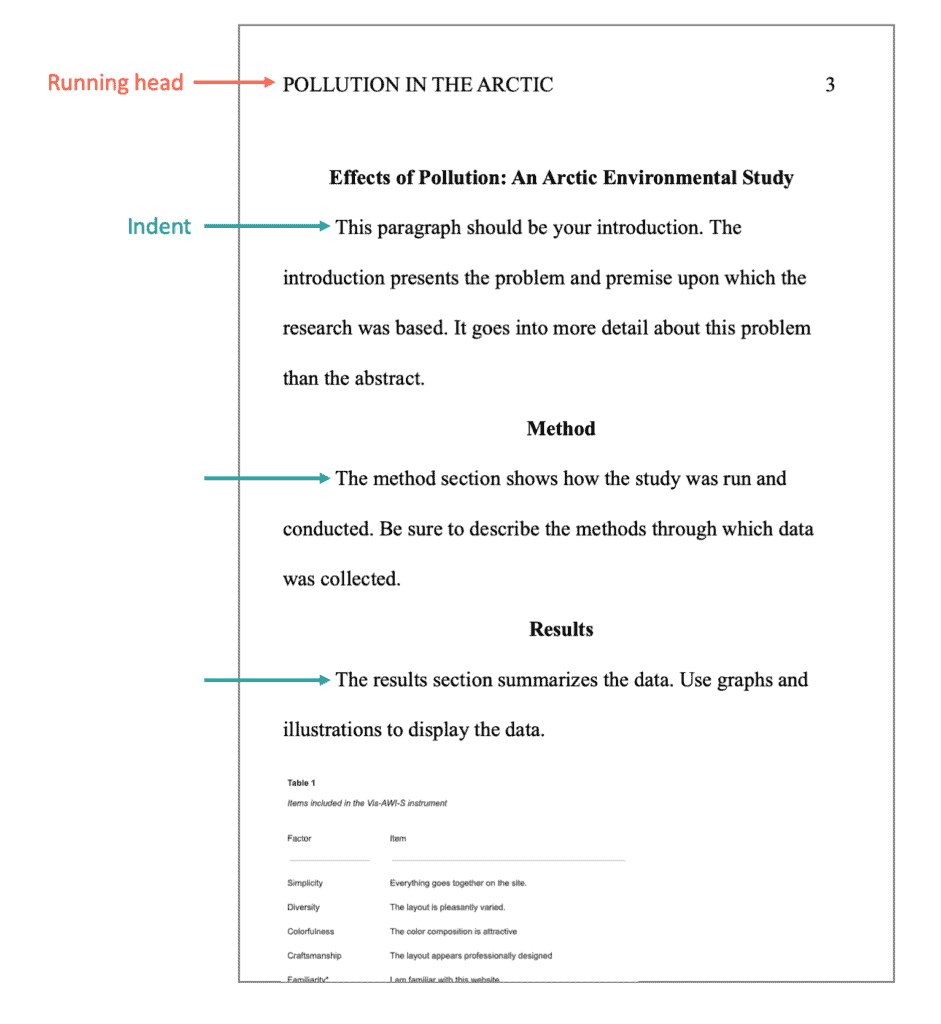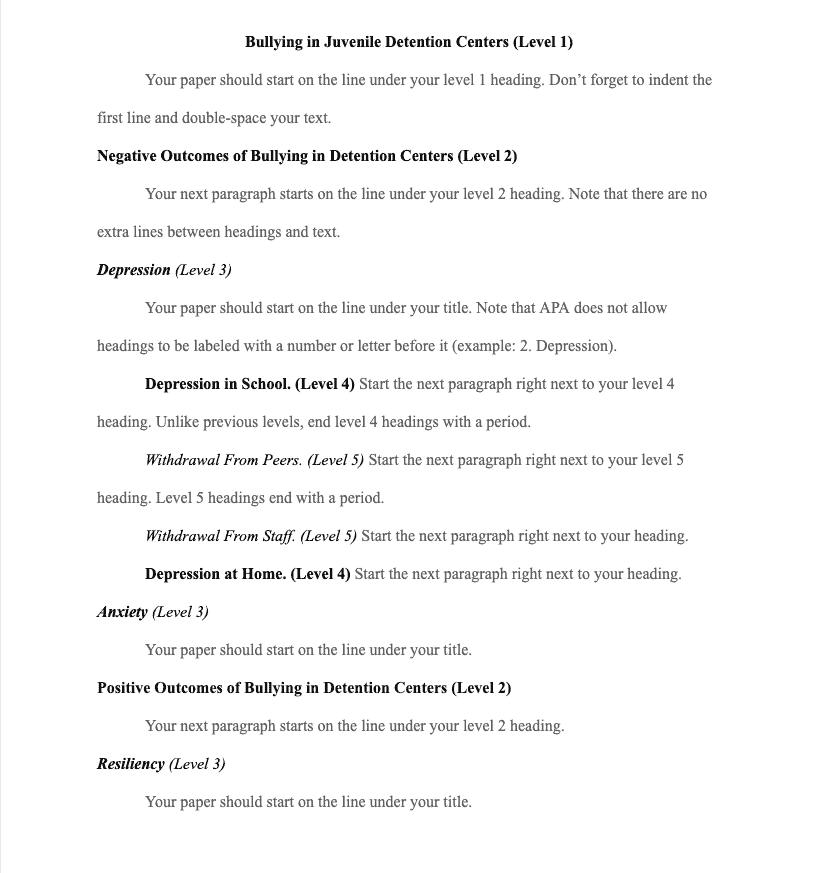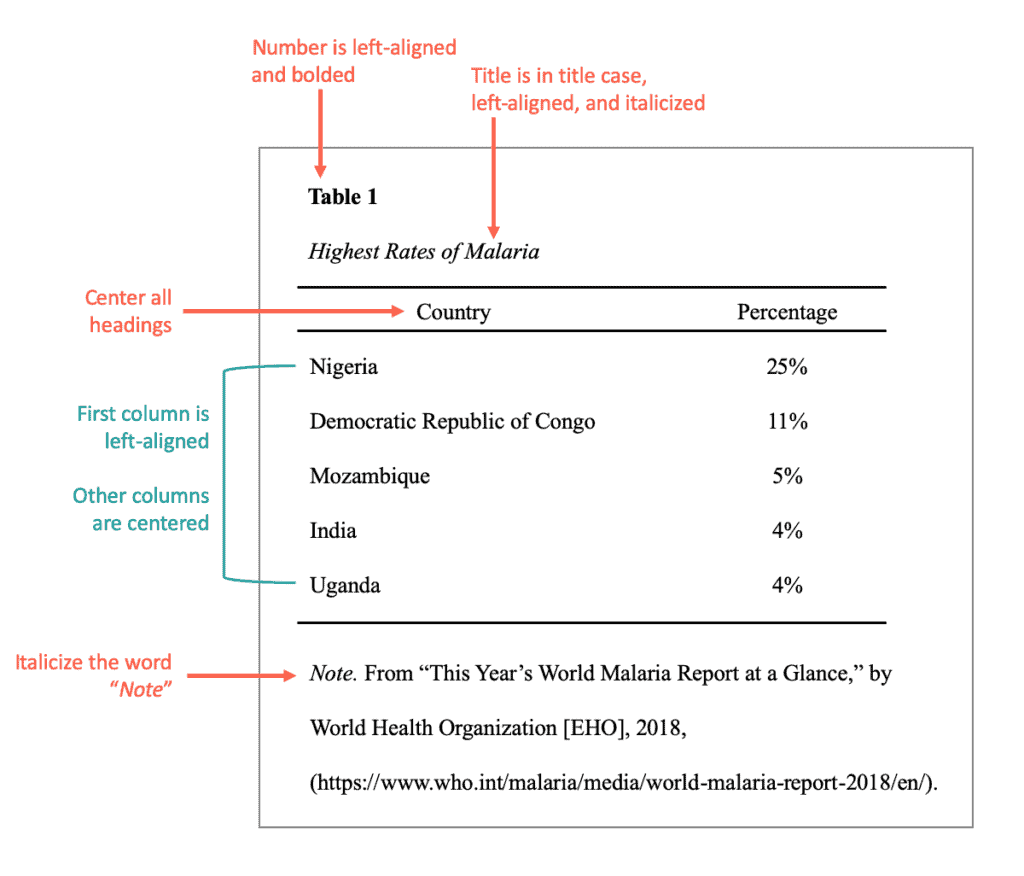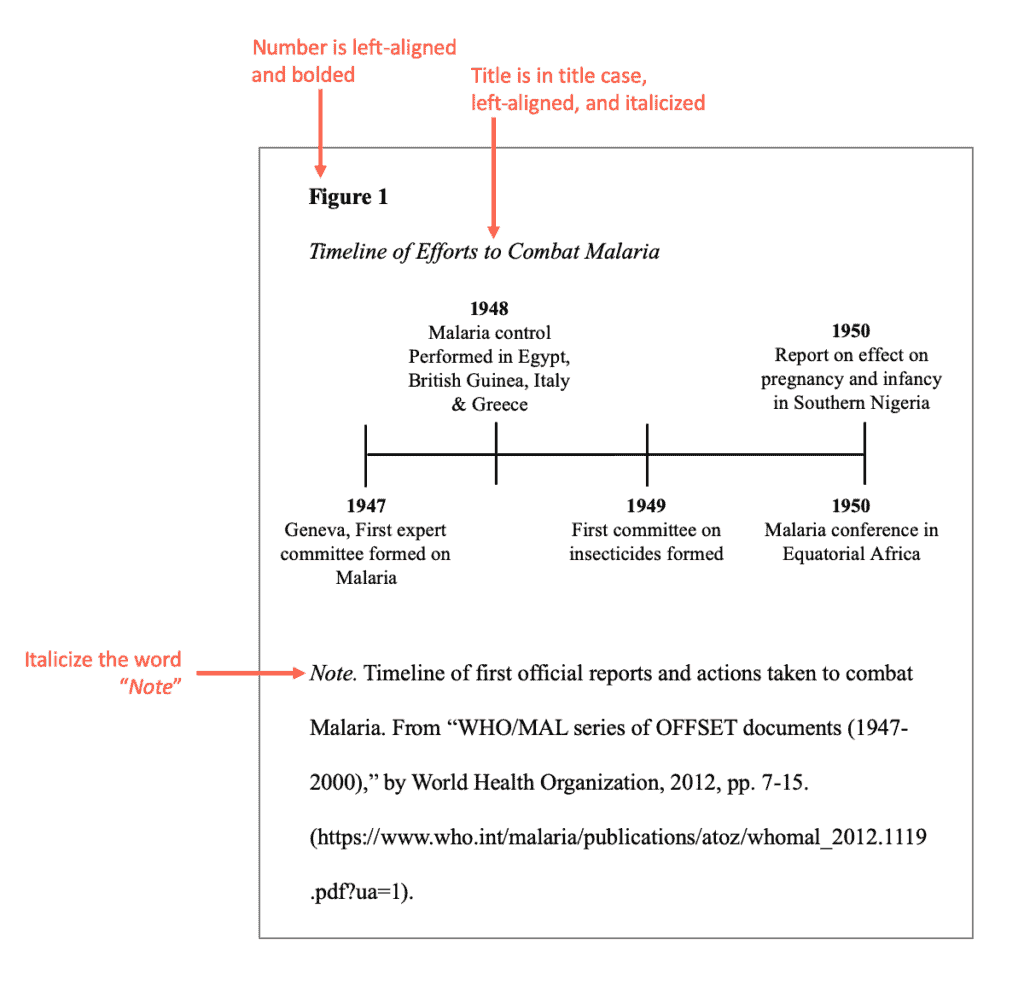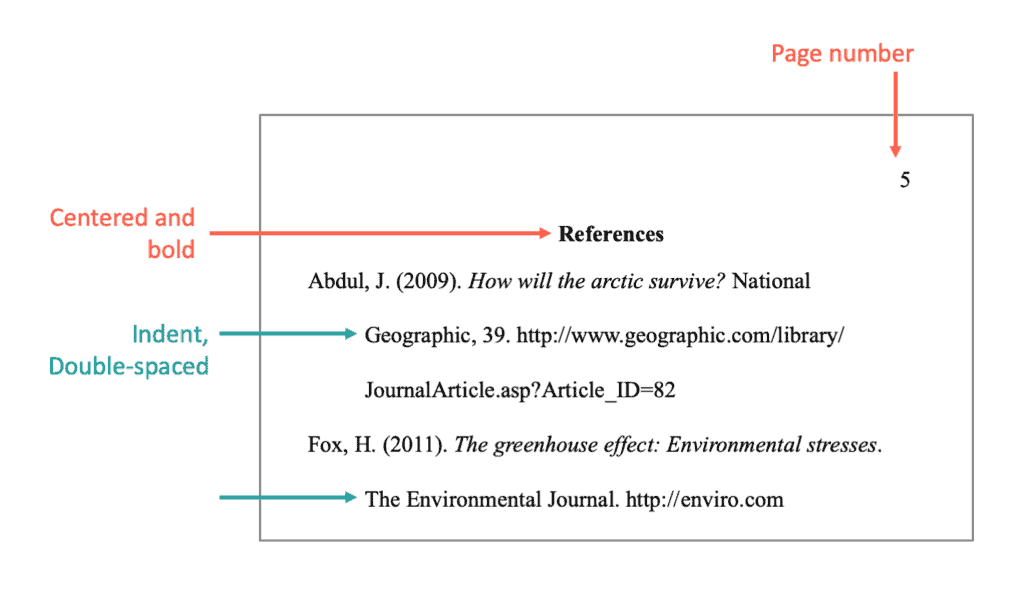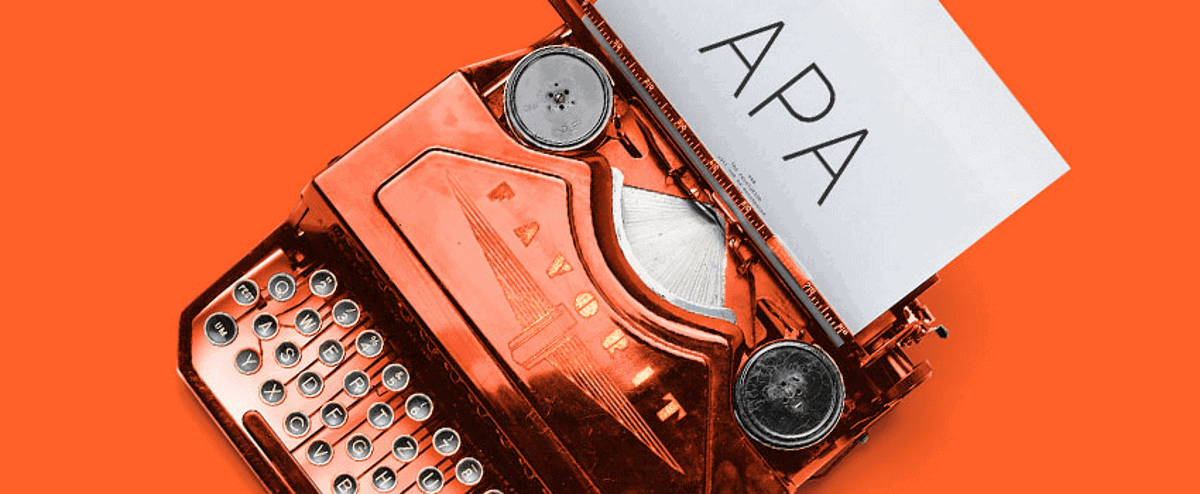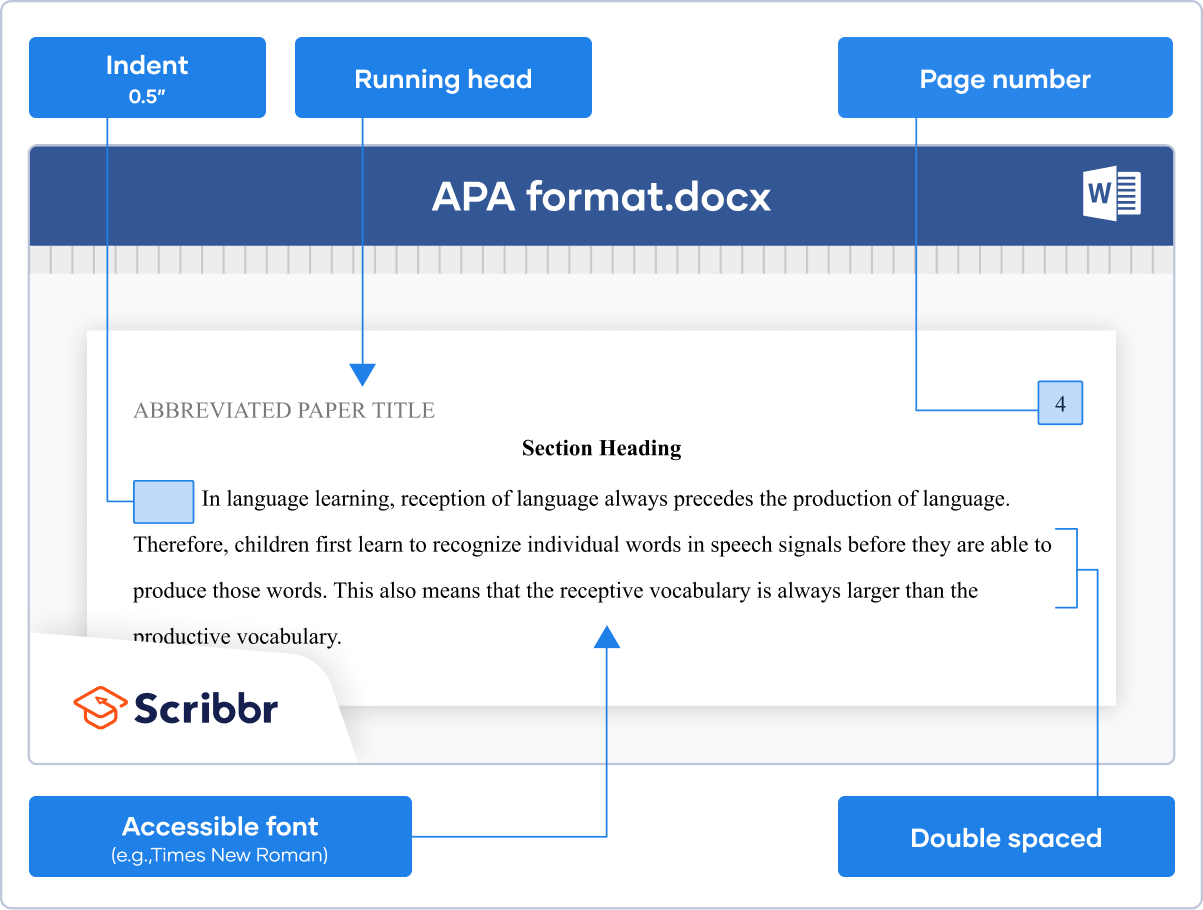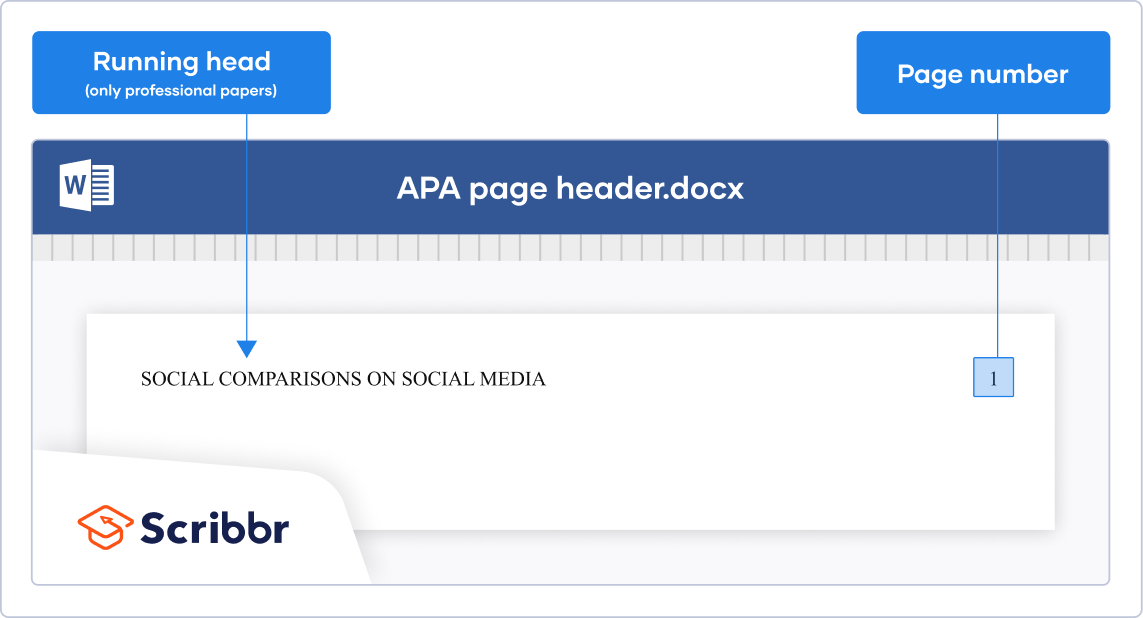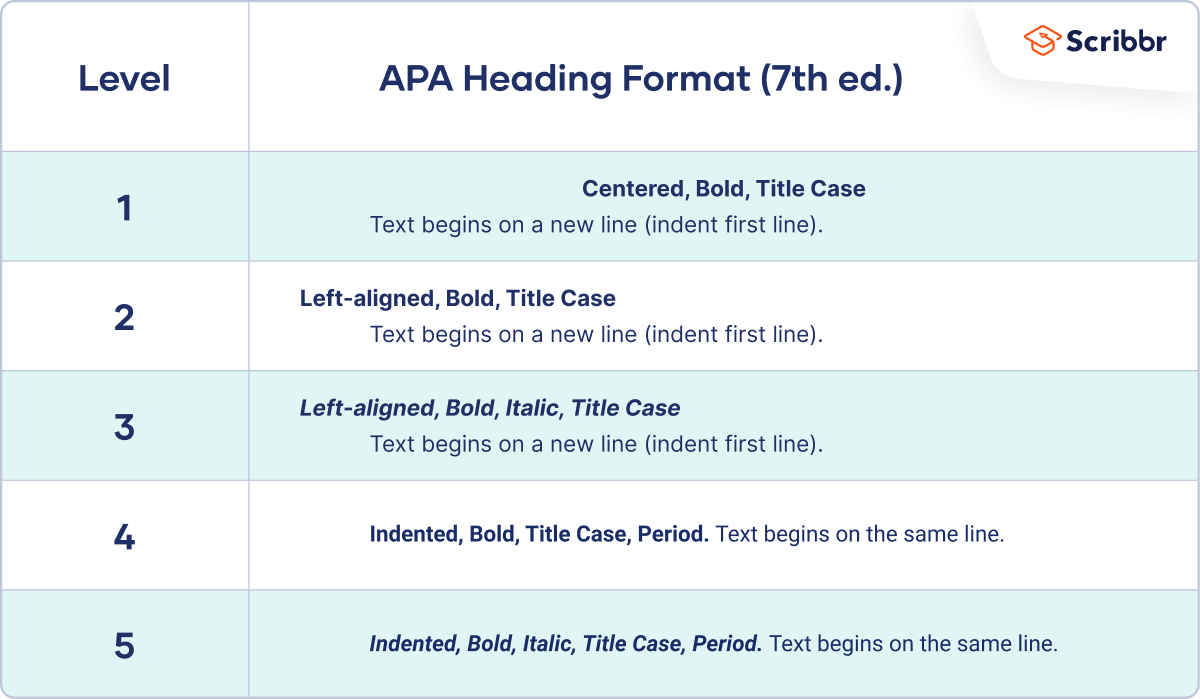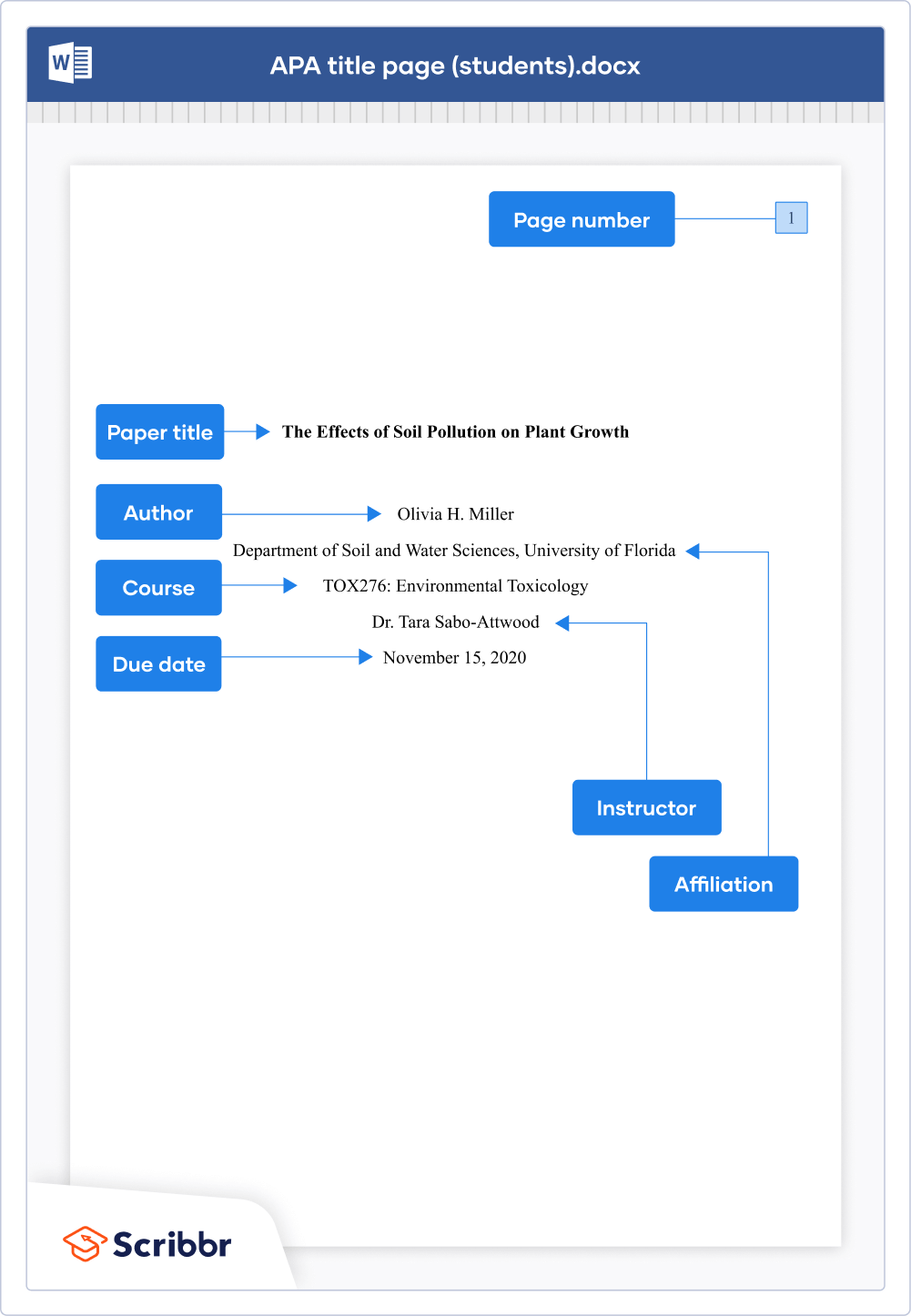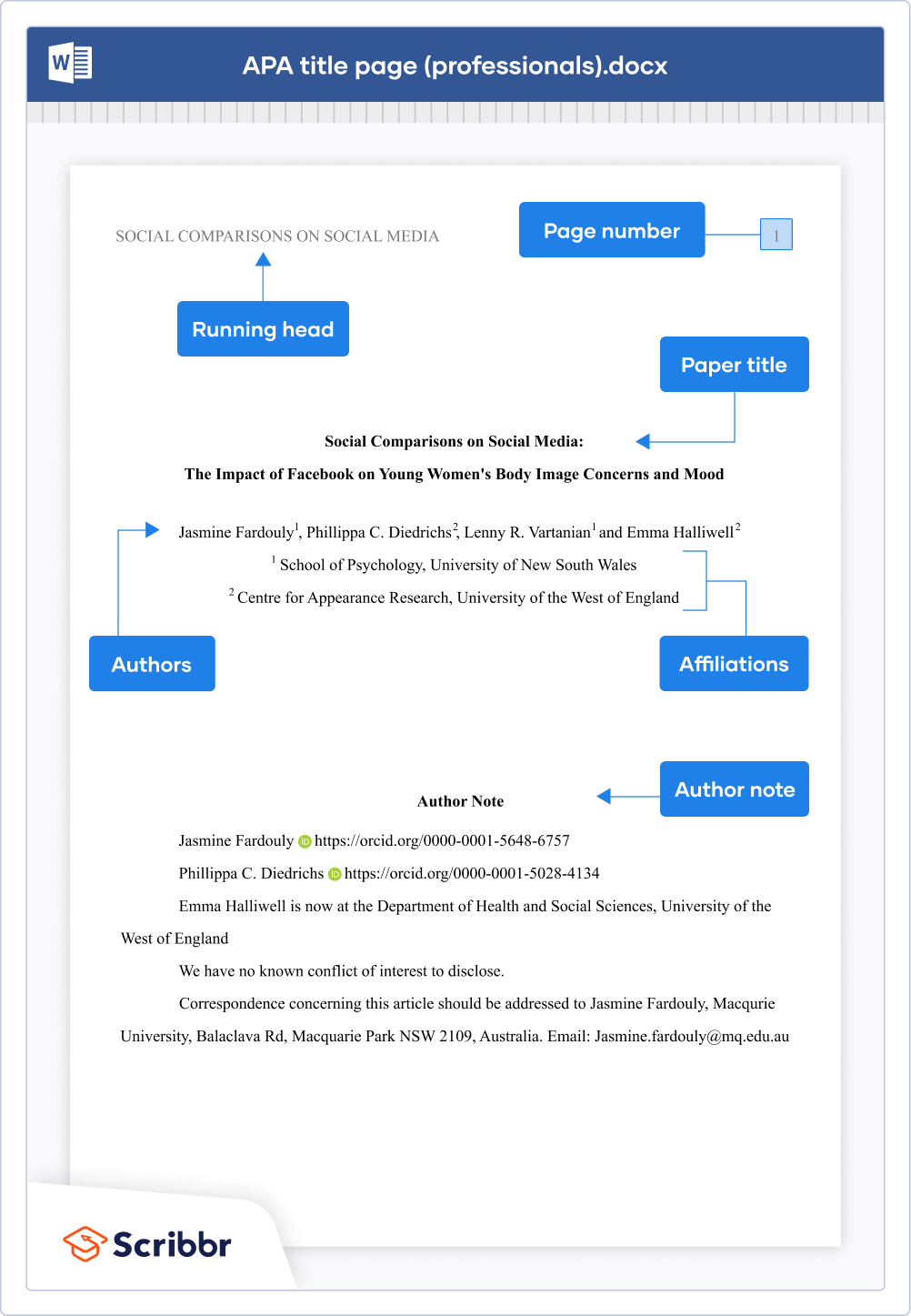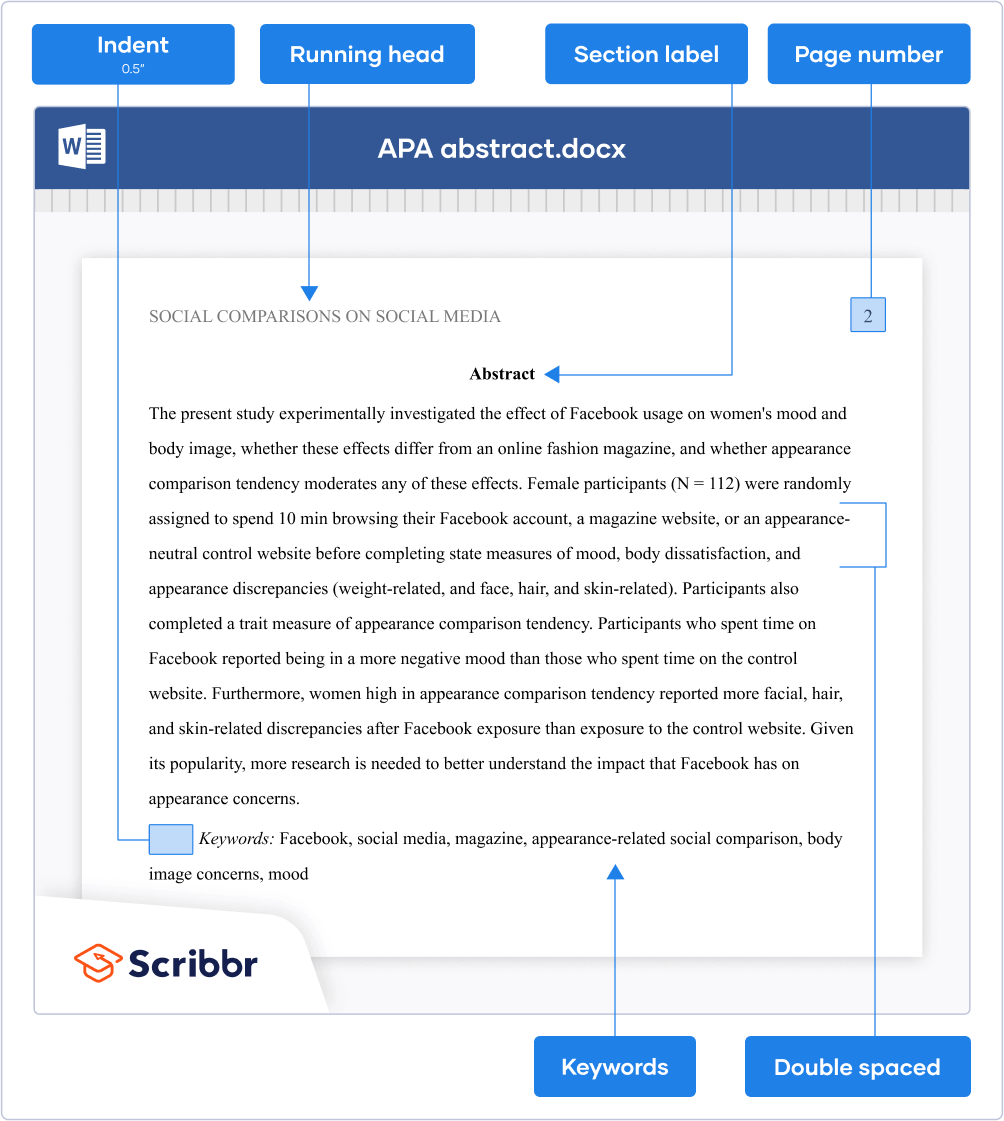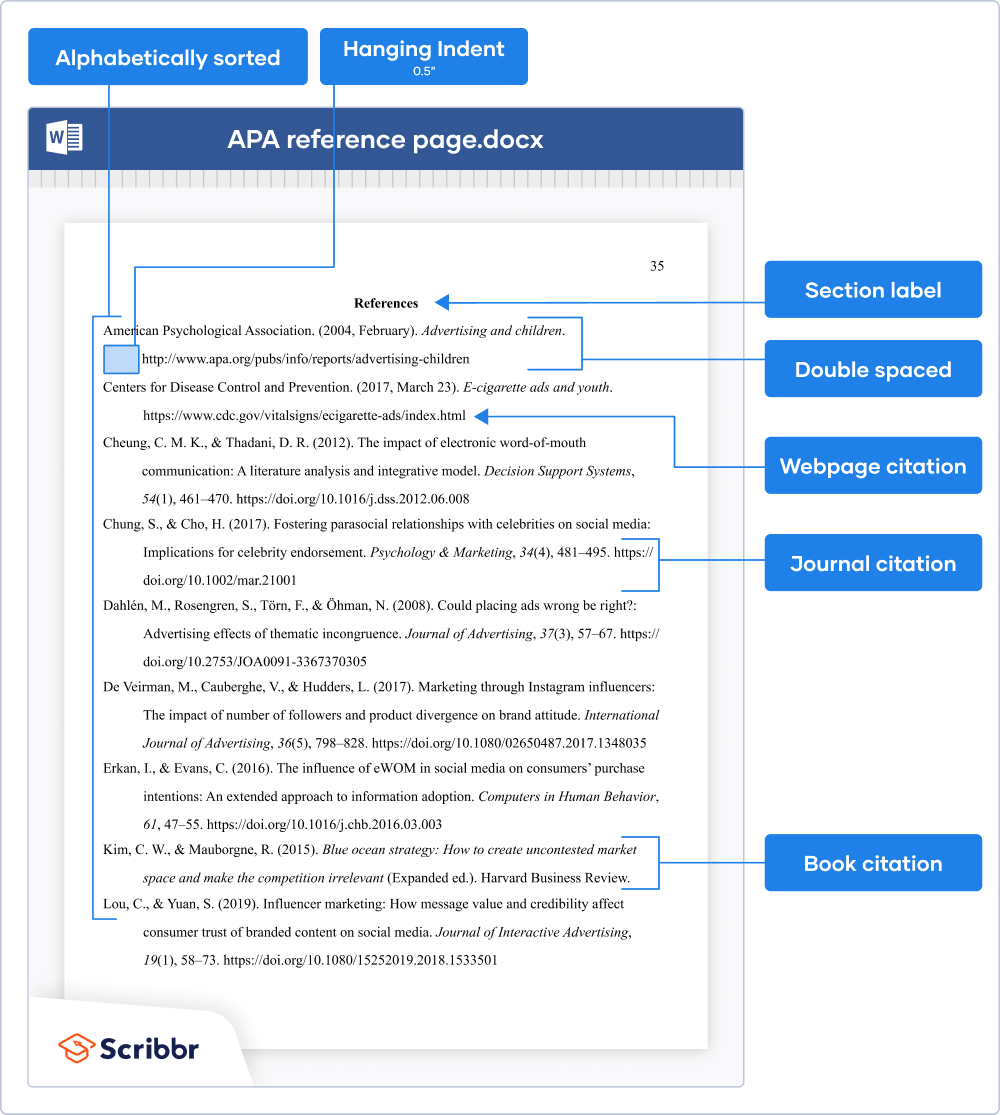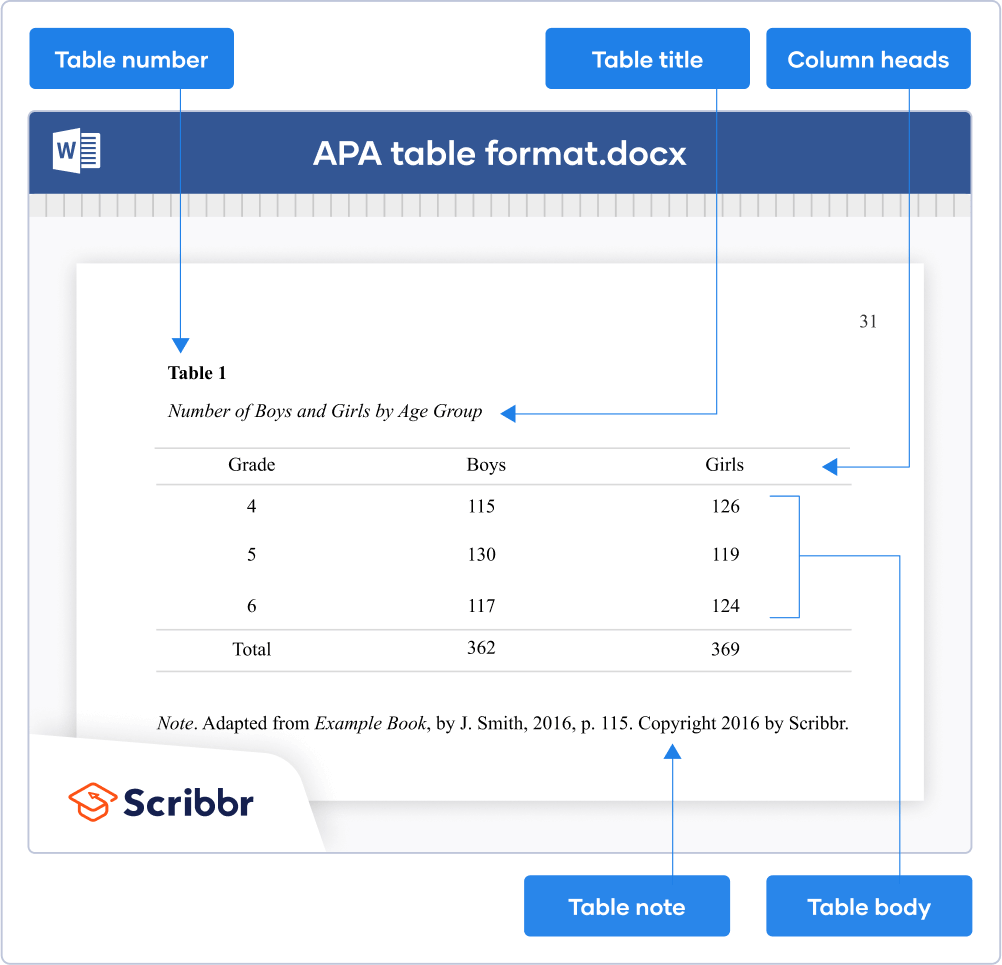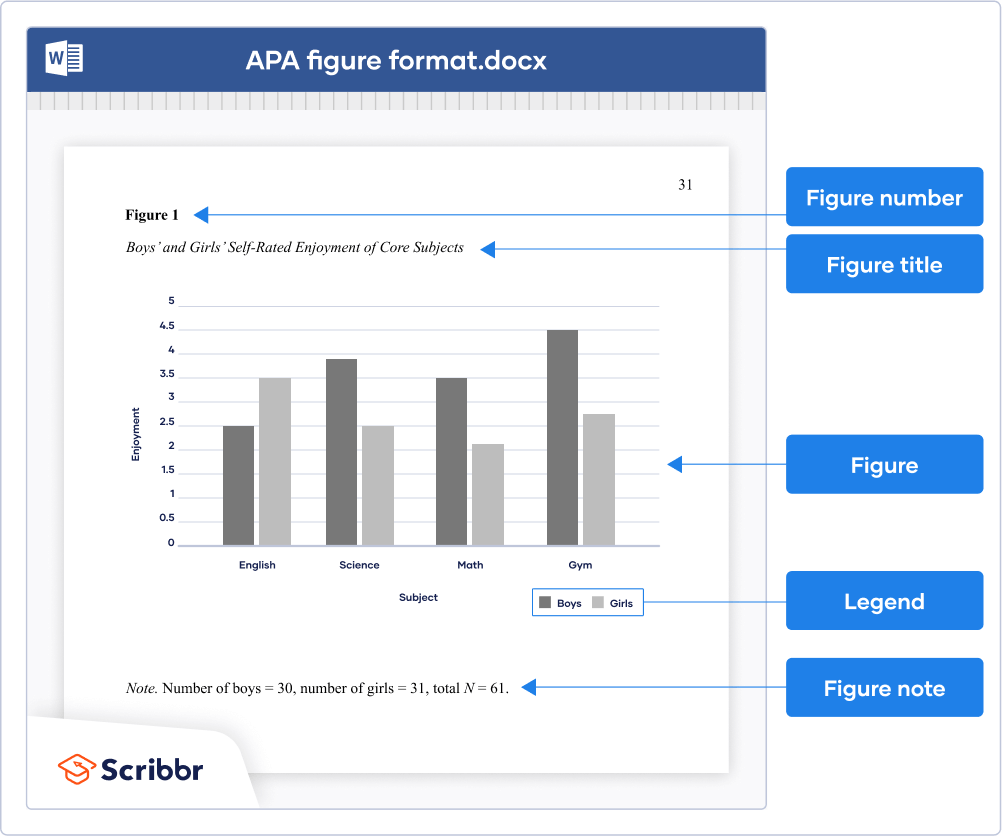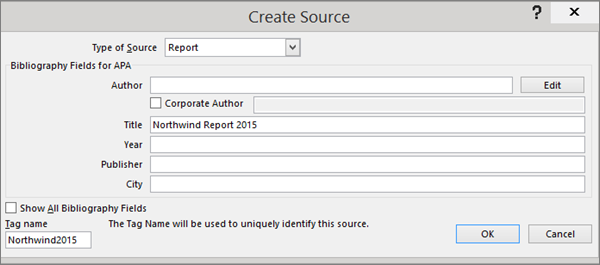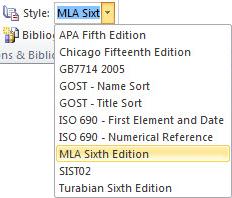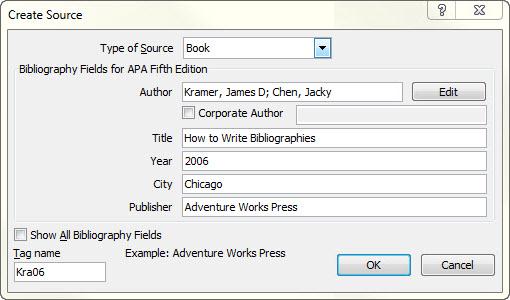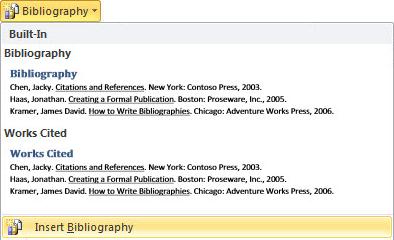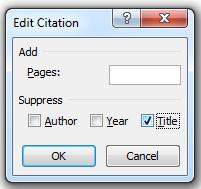Proper formatting is an essential part of any manuscript. This article will show you a detailed approach in formatting a manuscript using the American Psychological Association (APA) system. It will cover the general rules and specific guidelines for the APA body format.
Table of Content
- 1 What is the APA style?
- 2 General Rules
- 3 Sections of the APA Format Paper
- 3.1 Title page
- 3.2 Abstract
- 3.3 Body
- 3.4 Reference List
- 3.5 Footnotes
- 3.6 Appendices
- 3.7 Additional Insights
What is the APA style?
This formatting style, developed in 1929 by the American Psychological Association (APA), is most widely used in writing academic papers in different fields, especially the social sciences. If you are already accustomed to other formatting and referencing styles such as Chicago or MLA, that’s great. However, it is strongly recommended that you also get a good grip of APA formatting rules for some professors will surely require you to use these.
If you’re preparing to enter the university or getting ready for a social science subject and want to know more about APA formatting, you can read on for more substantial information that might come in handy.
General Rules
Basics:
In writing an academic paper in APA format, you have to use an 8.5 x 11 inch paper and make sure that it has a 1 inch margin on all sides. Also, the contents of your paper must be typed using Times New Roman with a font size of 12 and should always be double-spaced.
In every page, the title of your paper must be included in the left part of the header and the page number in Arabic numeral on the right. If your title has more than 50 characters, make a shorter version of it and use that shorter title for your header.
Margins and Font
- Use one inch margin on all sides of every page, and Times New Roman with 12-point font size.
Spacing
- All parts of the paper should be double spaced. Leave one space after a comma, colon, or semi-colon and two spaces after a period.
Alignment and Indention
- Align the text to the left and indent the first line of every paragraph by 5-7 spaces.
Running head and pagination
- The running head or the short version of the title appears on the first line of every page, flushed left and written in uppercase letters. It should be less than 50 characters in length including punctuations and spacing.
- In line with the running head is page number, which is located one inch from the right edge of the paper.
- The title page, abstract, body, references, footnotes, and appendices begin on a new page.
Headings
- The heading for each part (e.g. Title Page, Abstract, References, Footnotes, Appendix or Appendices) is aligned at the center in the first line below the running head.
Sequence
- The paper starts with the title page followed by the abstract, body of the paper, references, footnotes, and appendices (abstract, footnotes, and appendices are not always required in a document).
Sections of the APA Format Paper
Sections required for every APA paper: title page, abstract, body, reference list, footnotes and appendices
Title page
The first part of your paper is obviously the title page. On this page, you must type the title of your paper, your name, ID number, course title, school, and name of the professor. Don’t forget to have them centered on the page. For a detail explanation visit our guide on the APA title page.
As previously mentioned, every page must have a shorter version of the title and a page number. The only difference with the other pages is that for the title page, you would need to type “Running head: ” before the short title.
Elements: Running head, Title, Author byline, Institutional affiliation, Author note
Format:
- The title page begins at page one.
- Ideally, the title should not exceed 12 words.
- All elements are written in lowercase and uppercase letters, and are aligned at the center of the page.
- The title comes first and next lines contain the author byline, institutional affiliation and author note.
Abstract
After making the title page, the next page should contain the Abstract. Simply put, this is a summary of your whole paper and must only be composed of 150-250 words. Have the word “Abstract” centered on the page and the write-up itself should not be indented.
Content: One paragraph summary of the paper with 150 to 250 words
Format:
- The body of the abstract is in block format (no indention).
- Numbers are generally written in digits except those at the beginning of a sentence.
Body
The body of a paper is usually composed of an Introduction, Review of Related Literature, Method, Results, Discussion, and Conclusion and Recommendations. However, these may vary depending on the requirement of your professor. For example, some professors won’t require a separate chapter for the Review of Related Literature and would instead ask you to incorporate that into the Introduction and Discussion.
Just remember that all headings must be in bold and the first letter of each word should be capitalized except for the articles, conjunctions and prepositions. Also, you should have all first-level headings centered on the page and all second-level headings aligned to the left.
Content: Main part of the paper
Format:
- The heading of each subsection (e.g. Method, Results, Discussion) of the body is written in bold, aligned at the center, and with uppercase and lowercase letters.
- Subsequent headings and subheadings follow specific formatting rules for each level.
Reference List
Proper referencing is one of the most important parts of the APA paper format. As you write the main content of your paper, you will notice the need for citing sources. You can’t just make a statement and then tell people that it’s based on your common sense. No matter how simple it is the right way to do it is either to get some data from your results that might explain your claim or just support your statement with previous findings of experts.
There are several citation guidelines that need to be followed but normally, you just have to type the last name of the author, insert a comma, type the year of publication, and then enclose these in a parenthesis. This should be located at the end of the sentence before the period.
Whenever you write an in-text citation as mentioned above, make sure that you take note of these citations and include them in the reference list. So for instance, if you have 10 different in-text citations in the body of your paper, your reference list must have 10 entries as well.
Again, certain rules must be followed for each type of reference. In general, the sources listed in the reference list are composed of the last name of the author/s with the first letter of their first name, year of publication, title that is italicized, and place of publication. They should be alphabetized and presented with the first line of the reference aligned to the left and the next lines indented.
Content: Reference list
Elements: The main elements and specific format depend on the nature of the reference (e.g. books, non-print materials, online sources)
Format:
- All entries are listed in alphabetical order based on the last name of the author or title of the reference
- After the first line, indent the next lines by 5-7 spaces (hanging indention)
Footnotes
Content: Additional information to support the some parts of the manuscript.
Format:
- Each footnote is identified by a number in superscript that appears in the text.
- The first line of each footnote is indented by 5-7 spaces.
Appendices
Content: Complex data or information that is too cumbersome to include in the body of the paper.
Format:
- For more than one appendix, the heading “Appendix” should be accompanied by capital letters A, B, C and so forth (e.g. Appendix A, Appendix B, Appendix C).
- Indent the first line by 5-7 spaces.
Additional Insights
Aside from the fact that APA formatting can standardize the presentation of academic papers, APA paper format can also prevent you from being accused of plagiarism. Institutions consider plagiarism as a major offense and you could get penalized because of this. In order to avoid this, make sure that you give proper credit to the authors by strictly following the citation rules.
There are some cases wherein some students do not intentionally plagiarize but because of their negligence, they get into this kind of trouble. You probably have heard this a thousand times from your mom, but please try to be responsible and organized.
Another good thing about APA formatting is that it can add credibility to your study by presenting findings of experts that support your ideas and allow you to present the key points in a comprehensible manner.
Although Wikipedia is the most convenient way to get some information, it is really not a great idea to cite this in your paper. Exert some effort and make use of your school library to get scholarly books or peer-reviewed journals. Another winning tip, there are also online databases where you can get access to valid sources from the comfort of your own home. Using APA as a formatting style may be confusing at first but with constant practice and exposure, you will surely be able to master this in no time.
From Wikipedia, the free encyclopedia
APA style (also known as APA format) is a writing style and format for academic documents such as scholarly journal articles and books. It is commonly used for citing sources within the field of behavioral and social sciences, including sociology, education, health sciences, criminal justice, and anthropology, as well as psychology. It is described in the style guide of the American Psychological Association (APA), which is titled the Publication Manual of the American Psychological Association. The guidelines were developed to aid reading comprehension in the social and behavioral sciences, for clarity of communication, and for «word choice that best reduces bias in language».[1][2] APA style is widely used, either entirely or with modifications, by hundreds of other scientific journals (including medical and other public health journals), in many textbooks, and in academia (for papers written in classes). The current edition is its seventh revision.
The APA became involved in journal publishing in 1923.[3] In 1929, an APA committee had a seven-page writer’s guide published in the Psychological Bulletin.[4][5] In 1944, a 32-page guide appeared as an article in the same journal.[3][6] The first edition of the APA Publication Manual was published in 1952 as a 61-page supplement to the Psychological Bulletin,[7][8] marking the beginning of a recognized «APA style».[3] The initial edition went through two revisions: one in 1957, and one in 1967.[3] Subsequent editions were released in 1974, 1983, 1994, 2001, 2009, and 2019. The increasing length of the guidelines and its transformation into a manual have been accompanied by increasingly explicit prescriptions about many aspects of acceptable work. The earliest editions were controlled by a group of field leaders who were behaviorist in orientation and the manual has continued to foster that ideology, even as it has influenced many other fields.[9][10]
Primarily known for the simplicity of its reference citation style, the Manual also established standards for language use that had far-reaching effects. Particularly influential were the «Guidelines for Nonsexist Language in APA Journals,» first published as a modification to the 1974 edition, which provided practical alternatives to sexist language then in common usage.[11][12] The guidelines for reducing bias in language have been updated over the years and presently provide practical guidance for writing about age, disability, gender, participation in research, race and ethnicity, sexual orientation, socioeconomic status, and intersectionality (APA, 2020, Chapter 5).[1]
A typical APA-style research paper fulfills 3 levels of specification. Level 1 states how a research paper must be organized by including a title page, an abstract, an introduction, the methodology, the results, a discussion, and references. In addition, formatting of abstracts and title pages must be as per the APA manual of style. Level 2 specifies the style of writing. It must be clear and formal without slang, pop culture references, biased language, and humor. It must minimize literary devices, use technical terms appropriately, and be direct. Level 3 specifies the mechanics such as double-spacing, using title case for headings, using numerals for numbers 10 and above, hyphenating compound adjectives, using in-text citations for sources, left aligning all tables and figures, and using footnotes sparingly.[13]
Seventh edition of the Publication Manual[edit]
The seventh edition of the Publication Manual of the American Psychological Association is the current one, published in October 2019. The goal of the book is to help people become better writers and communicators by promoting clarity, precision, and inclusivity.[14]
The manual has new resources for students, including a student title page, student paper formats, and student-related reference formats such as classroom course pack material and classroom website sources. The book also includes new journal article reporting standards for qualitative and mixed methods research in addition to updated standards for quantitative research. The bias-free language guidelines have also been updated to reflect current best practices for talking about people’s personal characteristics.[15]
The manual addresses accessibility for people with disabilities for the first time.[16] APA worked with accessibility experts to ensure APA style is accessible. For example, the in-text citation format is shortened so that the citations are easier to read for people who, for example, use screen readers or have cognitive disabilities.
The manual has hundreds of reference examples, including formats for audiovisual media, social media, and webpages. There are many sample tables and figures, including basic student-friendly examples such as bar graphs. There are also sample papers for professionals and students.[15]
Since the seventh edition, APA also provides an APA Style website[17] and APA Style blog[18] to help people with APA style and answer common questions.
Sixth edition of the Publication Manual[edit]
The sixth edition of the Publication Manual of the American Psychological Association was in effect from 2009 to 2019, after four years of development. The Publication Manual Revision Task Force of the American Psychological Association established parameters for the revision based on published critique; user comments; commissioned reviews; and input from psychologists, nurses, librarians, business leaders, publishing professionals, and APA governance groups.[19][20] To accomplish these revisions, the Task Force appointed working groups of four to nine members in seven areas: bias-free language, ethics, graphics, Journal Article Reporting Standards,[21] references, statistics, and writing style (APA, 2009, pp. xvii–xviii).
The APA explained the issuing of a new edition only eight years after the fifth edition by pointing to the increased use of online source or online access to academic journals (6th edition, p. XV). The sixth edition is accompanied by a style website as well as the APA Style Blog which answers many common questions from users.
Errors in the first printing of the 6th edition[edit]
Sample papers in the first printing of the sixth edition contained errors. APA staff posted all of the corrections online for free in a single document on October 1, 2009, and shortly thereafter alerted users to the existence of the corrections in an APA blog entry.[22] These errors attracted significant attention from the scholarly community and nearly two weeks later, on October 13, 2009, the article «Correcting a Style Guide» was published in the online newspaper Inside Higher Ed that included interviews with several individuals, one of whom described the errors as «egregious».[23] All copies of the printing with errors were soon after recalled in 2009 (including those from major retailers such as Amazon.com) and a new printing correcting all the errors, with a copyright date of 2010,[24] was issued.
In-text citations[edit]
APA Style uses an author–date reference citation system in the text with an accompanying reference list. That means that to cite any reference in a paper, the writer should cite the author and year of the work, either by putting both in parentheses separated by a comma (parenthetical citation) or by putting the author in the narrative of the sentence and the year in parentheses (narrative citation).
Example narrative citation: Schmidt and Oh (2016) described a fear among the public that the findings of science are not actually real.
Example parenthetical citation: «In our postfactual era, many members of the public fear that the findings of science are not real» (Schmidt & Oh, 2016).
Reference list[edit]
In the APA reference list, the writer should provide the author, year, title, and source of the cited work in an alphabetical list of references. If a reference is not cited in the text, it should not be included in the reference list. The reference format varies depending on the document type (e.g., journal article, edited book chapter, blog post, webpage), but broadly speaking always follows the same pattern of author, date, title, source. If the source is undated, the abbreviation n.d. (no date) is used.
| Reference type | Template | Example |
|---|---|---|
| Journal article with a DOI | Author, A., & Author, B. (year). Title of article. Journal Title, Volume(Issue), page range. DOI | Schmidt, F. L., & Oh, I.-S. (2016). The crisis of confidence in research findings in psychology: Is lack of replication the real problem? Or is it something else? Archives of Scientific Psychology, 4(1), 32–37. https://doi.org/10.1037/arc0000029 |
| Whole book | Author, A., & Author, B. (year). Title of book. Publisher. | Brown, B. (2010). The gifts of imperfection: Let go of who you think you’re supposed to be and embrace who you are. Hazelden. |
| Edited book chapter with a DOI | Author, A., & Author, B. (year). Title of chapter. In E. Editor & A. Editor (Eds.), Title of book (pp. xx–xxi). Publisher. DOI | Singh, A. A., Hwahng, S. J., Chang, S. C., & White, B. (2017). Affirmative counseling with trans/gender-variant people of color. In A. Singh & L. M. Dickey (Eds.), Affirmative counseling and psychological practice with transgender and gender nonconforming clients (pp. 41–68). American Psychological Association. https://doi.org/10.1037/14957-003 |
| Webpage on a website | Author, A., & Author, B. (year). Title of page. Site Name. URL
Group Author. (year). Title of page. URL |
American Psychological Association. (n.d.). APA divisions. https://www.apa.org/about/division/ |
- If a DOI is assigned to the work, give the DOI. If the item is available online but does not have a DOI, and it has a URL that will work, give the URL. Do not give a URL that will not work.
- Always include the publisher in the source element for books and reference works; exceptions to this guideline include when the author and publisher are the same, and in this case, you omit the publisher from your reference.
- In the seventh edition, the title of a webpage is always italic.
- As of the seventh edition, the issue number of a journal is always listed in a reference citation if one is available. Prior to the seventh edition, if the journal cited employed continuous pagination throughout a volume, only the volume number was listed in the reference list.
- According to the seventh edition, it is no longer obligatory to provide the publisher’s location when citing a book.
See also[edit]
- Citation
- Comparison of reference management software
- MLA style
- Chicago style
References[edit]
- ^ a b The Publication Manual of the American Psychological Association (7th ed.). Washington, DC: American Psychological Association. 2020. ISBN 978-1-4338-3217-8.
- ^ «APA Style». Washington, DC: American Psychological Association. Retrieved February 26, 2020.
- ^ a b c d VandenBos, Gary R. (1992). «The APA Knowledge Dissemination Program: An overview of 100 years». In Rand B. Evans; Virginia Staudt Sexton; Thomas C. Cadwallader (eds.). The American Psychological Association: A Historical Perspective. Washington, DC: American Psychological Association. pp. 347–390. ISBN 978-1-55798-136-3.
- ^ Bentley, M.; Peerenboom, C. A.; Hodge, F. W.; Passano, Edward B.; Warren, H. C.; Washburn, M. F. (February 1929). «Instructions in regard to preparation of manuscript». Psychological Bulletin. 26 (2): 57–63. doi:10.1037/h0071487. ISSN 0033-2909.
- ^ «APA Style Blog: The Origins of APA Style». blog.apastyle.org. Retrieved 2016-12-14.
- ^ Anderson, J. E.; Valentine, W. L. (June 1944). «The preparation of articles for publication in the journals of the American Psychological Association». Psychological Bulletin. 41 (6): 345–376. doi:10.1037/h0063335. ISSN 0033-2909.
- ^ «Publication Manual of the American Psychological Association». Psychological Bulletin. 49 (4): 388–448. 1952.
- ^ APA Publications and Communications Board Working Group on Journal Article Reporting Standards (December 2008). «Reporting Standards for Research in Psychology: Why Do We Need Them? What Might They Be?» (PDF). American Psychologist. 63 (9): 839–851. doi:10.1037/0003-066x.63.9.839. PMC 2957094. PMID 19086746.
- ^ Bazerman, C. (1987). Codifying the social scientific style: The APA Publication Manual as a behaviorist rhetoric. In J. Nelson, A. Megill, & D. McCloskey (Eds.). The rhetoric of the human sciences (pp. 125-144). Madison: University of Wisconsin Press.
- ^ Madigan, R., Johnson, S., Linton, P., Fowler, R. (1995). The Language of Psychology: APA Style as Epistemology. The American psychologist, 50 (6), 428-436.
- ^ APA Task Force on Issues of Sexual Bias in Graduate Education (June 1975). «Guidelines for nonsexist use of language». American Psychologist. Washington, DC: American Psychological Association. 32 (6): 487–494. doi:10.1037/h0076869. ISSN 0003-066X. OCLC 696450842.
- ^ APA Publication Manual Task Force (June 1977). «Guidelines for nonsexist language in APA journals [Change Sheet 2]». American Psychologist. Washington, DC: American Psychological Association. 30 (6): 682–684. doi:10.1037/0003-066X.32.6.487. ISSN 0003-066X. OCLC 696450842.
- ^ «What is APA Style? Everything You Need to Know». Enago. Retrieved 2021-09-17.
- ^ «About APA Style». apastyle.org. American Psychological Association. Retrieved February 27, 2020.
- ^ a b «Product page for Publication Manual of the American Psychological Association, Seventh Edition (2020)». American Psychological Association. Retrieved February 27, 2020.
- ^ Introduction to the Publication Manual of the American Psychological Association, Seventh Edition (PDF). Washington, DC: American Psychological Association. 2020. pp. xviii. Retrieved February 27, 2020.
- ^ «APA Style». apastyle.apa.org.
- ^ «APA Style Blog». apastyle.apa.org.
- ^ American Psychological Association (April 13–14, 2007). Meeting of the Council of Editors (Agenda book). Washington, DC: APA Archives.
- ^ American Psychological Association (May 18–20, 2007). Meeting of the Publications and Communications Board (Agenda book). Washington, DC: APA Archives.
- ^ APA Publications and Communications Board Working Group on Journal Article Reporting Standards (2008). «Reporting Standards for Research in Psychology: Why Do We Need Them? What Might They Be?» (PDF). American Psychologist. 63 (9): 839–851. doi:10.1037/0003-066x.63.9.839. PMC 2957094. PMID 19086746.
- ^ Skutley, Mary Lynn (October 8, 2009). «Note to APA Style Community: Sixth Edition Corrections». APA blog.
- ^ Epstein, Jennifer (October 13, 2009). Jaschik, Scott; Lederman, Doug (eds.). «Correcting a Style Guide». Inside Higher Ed. Washington, DC. Retrieved October 27, 2011.
- ^ LC Catalog – Item Information (Full Record). catalog.loc.gov. 2010.
Bibliography[edit]
- Publication Manual of the American Psychological Association (7th ed.). Washington, DC: American Psychological Association. 2020. ISBN 978-1-4338-3217-8. (spiral bound)
- Publication Manual of the American Psychological Association (6th ed.). Washington, DC: American Psychological Association. 2010. ISBN 978-1-4338-0562-2. (spiral bound)
- Publication Manual of the American Psychological Association (5th ed.). Washington, DC: American Psychological Association. 2001. ISBN 978-1-55798-791-4.
External links[edit]
Wikiversity has learning resources about APA style
- «American Psychological Association». apa.org.
- «APA Style». apastyle.org. Archived from the original on 2013-03-27. Retrieved 2010-03-15.
- APA Formatted Paper Template at Indian River State College’s Library site.
- APA Formatted Paper Template at LibreOffice (GPL License).
- Interactive APA at Massey University’s OWLL site.
- APA resources at Purdue University’s Online Writing Lab
APA Format for Students & Researchers
Share to Google Classroom
In this guide, students and researchers can learn the basics of creating a properly formatted research paper according to APA guidelines.
It includes information on how to conceptualize, outline, and format the basic structure of your paper, as well as practical tips on spelling, abbreviation, punctuation, and more. The guide concludes with a complete sample paper as well as a final checklist that writers can use to prepare their work for submission.
APA Paper Formatting Basics
- All text should be double-spaced
- Use one-inch margins on all sides
- All paragraphs in the body are indented
- Make sure that the title is centered on the page with your name and school/institution underneath
- Use 12-point font throughout
- All pages should be numbered in the upper right hand corner
- The manual recommends using one space after most punctuation marks
- A shortened version of the title (“running head”) should be placed in the upper left hand corner
Table of Contents
Here’s a quick rundown of the contents of this guide on how to do APA format.
Information related to writing and organizing your paper:
- Paper and essay categories
- General paper length
- Margin sizes
- Title pages
- Running Heads
- APA Outline
- APA Abstract
- The body of papers
- APA headings and subheadings
- Use of graphics (tables and figures)
Writing style tips:
- Verb usage
- Proper tone
- Reducing bias and labels
- Spelling
- Abbreviation do’s and don’ts
- Spacing
- Punctuation
- Number rules
Citing Your Sources:
- Citing Sources
- In-text Citations
- Reference Page
Proofing Your Paper:
- Final checklist
- Submitting your project
APA Information:
- What is APA
- APA 7 Updates
What you won’t find in this guide: This guide provides information related to the formatting of your paper, as in guidelines related to spacing, margins, word choice, etc. While it provides a general overview of APA references, it does not provide instructions for how to cite in APA format.
For step-by-step instructions for citing books, journals, how to cite a website in APA format, information on an APA format bibliography, and more, refer to these other EasyBib guides:
- APA citation (general reference guide)
- APA In-text citation
- APA article citation
- APA book citation
- APA citation website
Or, you can use our automatic generator. Our APA formatter helps to build your references for you. Yep, you read that correctly.
Writing and Organizing Your APA Paper in an Effective Way
This section of our guide focuses on proper paper length, how to format headings, spacing, and more! This information can be found in Chapter 2 of the official manual (American Psychological Association, 2020, pp. 29-67).
Categories of papers
Before getting into the nitty-gritty details related to APA research paper format, first determine the type of paper you’re about to embark on creating:
Empirical studies
Empirical studies take data from observations and experiments to generate research reports. It is different from other types of studies in that it isn’t based on theories or ideas, but on actual data.
Literature reviews
These papers analyze another individual’s work or a group of works. The purpose is to gather information about a current issue or problem and to communicate where we are today. It sheds light on issues and attempts to fill those gaps with suggestions for future research and methods.
Theoretical articles
These papers are somewhat similar to a literature reviews in that the author collects, examines, and shares information about a current issue or problem, by using others’ research. It is different from literature reviews in that it attempts to explain or solve a problem by coming up with a new theory. This theory is justified with valid evidence.
Methodological articles
These articles showcase new advances, or modifications to an existing practice, in a scientific method or procedure. The author has data or documentation to prove that their new method, or improvement to a method, is valid. Plenty of evidence is included in this type of article. In addition, the author explains the current method being used in addition to their own findings, in order to allow the reader to understand and modify their own current practices.
Case studies
Case studies present information related an individual, group, or larger set of individuals. These subjects are analyzed for a specific reason and the author reports on the method and conclusions from their study. The author may also make suggestions for future research, create possible theories, and/or determine a solution to a problem.
General paper length
Since APA style format is used often in science fields, the belief is “less is more.” Make sure you’re able to get your points across in a clear and brief way. Be direct, clear, and professional. Try not to add fluff and unnecessary details into your paper or writing. This will keep the paper length shorter and more concise.
Margin sizes in APA Format
When it comes to margins, keep them consistent across the left, right, top, and bottom of the page. All four sides should be the same distance from the edge of the paper. It’s recommended to use at least one-inch margins around each side. It’s acceptable to use larger margins, but the margins should never be smaller than an inch.
Title pages in APA Format
The title page, or APA format cover page, is the first page of a paper or essay. Some teachers and professors do not require a title page, but some do. If you’re not sure if you should include one or not, ask your teacher. Some appreciate the page, which clearly displays the writer’s name and the title of the paper.
The APA format title page for student papers includes six main components:
- the title of the APA format paper
- names of all authors
- institutional affiliation
- course number and title
- instructor’s name
- due date
Title pages for professional papers also require a running head; student papers do not.
Some instructors and professional publications also ask for an author’s note. If you’re required or would like to include an author’s note, place it below the institutional affiliation. Examples of information included in an author’s note include an ORCID iD number, a disclosure, and an acknowledgement.
Here are key guidelines to developing your title page:
- The title of the paper should capture the main idea of the essay, but should not contain abbreviations or words that serve no purpose. For example, instead of using the title “A Look at Amphibians From the Past,” title the paper “Amphibians From the Past.” Delete the unnecessary fluff!
- Center the title on the page and place it about 3-4 lines from the top.
- The title should be bolded, in title case, and the same font size as your other page text. Do not underline or italicize the title. Other text on the page should be plain (not bolded, underlined, or italicized).
- All text on the title page should be double-spaced. The APA format examples paper below displays proper spacing, so go take a look!
- Do not include any titles in the author’s name such as Dr. or Ms. In contrast, for your instructor’s name, use the form they prefer (e.g., Sagar Parekh, PhD; Dr. Minako Asato; Professor Nathan Ian Brown; etc.).
- The institutional affiliation is the school the author attends or the location where the author conducted the research.
In a hurry? Try the EasyBib title page maker to easily create a title page for free.
Sample of an APA format title page for a student paper:
Sample of title page for a professional paper:
View our in-depth APA Title Page Guide
Running heads in APA Format
The 7th edition of the American Psychological Association Publication Manual (p. 37) states that running heads are not required for student papers unless requested by the instructor. Student papers still need a page number included in the upper right-hand corner of every page. The 6th edition required a running head for student papers, so be sure to confirm with your instructor which edition you should follow. Of note, this guide follows the 7th edition.
Running heads are required for professional papers (e.g., manuscripts submitted for publication). Read on for instructions on how to create them.
Are you wondering what is a “running head”? It’s basically a page header at the top of every page. To make this process easier, set your word processor to automatically add these components onto each page. You may want to look for “Header” in the features.
A running head/page header includes two pieces:
- the title of the paper
- page numbers.
Insert page numbers justified to the right-hand side of the APA format paper (do not put p. or pg. in front of the page numbers).
For all pages of the paper, including the APA format title page, include the “TITLE OF YOUR PAPER” justified to the left in capital letters (i.e., the running head). If your full title is long (over 50 characters), the running head title should be a shortened version.
Preparing outlines in APA Format
Outlines are extremely beneficial as they help writers stay organized, determine the scope of the research that needs to be included, and establish headings and subheadings.
There isn’t an official or recommended “APA format for outline” structure. It is up to the writer (if they choose to make use of an outline) to determine how to organize it and the characters to include. Some writers use a mix of roman numerals, numbers, and uppercase and lowercase letters.
Even though there isn’t a required or recommended APA format for an outline, we encourage writers to make use of one. Who wouldn’t want to put together a rough outline of their project? We promise you, an outline will help you stay on track.
Here’s our version of how APA format for outlines could look:
Don’t forget, if you’re looking for information on APA citation format and other related topics, check out our other comprehensive guides.
How to form an abstract in APA
An APA format abstract (p. 38) is a summary of a scholarly article or scientific study. Scholarly articles and studies are rather lengthy documents, and abstracts allow readers to first determine if they’d like to read an article in its entirety or not.
You may come across abstracts while researching a topic. Many databases display abstracts in the search results and often display them before showing the full text of an article or scientific study. It is important to create a high quality abstract that accurately communicates the purpose and goal of your paper, as readers will determine if it is worthy to continue reading or not.
Are you wondering if you need to create an abstract for your assignment?Usually, student papers do not require an abstract. Abstracts are not typically seen in class assignments, and are usually only included when submitting a paper for publication. Unless your teacher or professor asked for it, you probably don’t need to have one for your class assignment.
If you’re planning on submitting your paper to a journal for publication, first check the journal’s website to learn about abstract and APA paper format requirements.
Here are some helpful suggestions to create a dynamic abstract:
- Abstracts are found on their own page, directly after the title or cover page.
- Professional papers only (not student papers): Include the running head on the top of the page.
- On the first line of the page, center the word “Abstract” (but do not include quotation marks).
- On the following line, write a summary of the key points of your research. Your abstract summary is a way to introduce readers to your research topic, the questions that will be answered, the process you took, and any findings or conclusions you drew. Use concise, brief, informative language. You only have a few sentences to share the summary of your entire document, so be direct with your wording.
- This summary should not be indented, but should be double-spaced and less than 250 words.
- If applicable, help researchers find your work in databases by listing keywords from your paper after your summary. To do this, indent and type Keywords: in italics. Then list your keywords that stand out in your research. You can also include keyword strings that you think readers will type into the search box.
- Use an active voice, not a passive voice. When writing with an active voice, the subject performs the action. When writing with a passive voice, the subject receives the action.
- Active voice: The subjects reacted to the medication.
- Passive voice: There was a reaction from the subjects taking the medication.
- Instead of evaluating your project in the abstract, simply report what it contains.
- If a large portion of your work includes the extension of someone else’s research, share this in the abstract and include the author’s last name and the year their work was released.
APA format example page:
Here’s an example of an abstract:
Visual design is a critical aspect of any web page or user interface, and its impact on a user’s experience has been studied extensively. Research has shown a positive correlation between a user’s perceived usability and a user’s assessment of visual design. Additionally, perceived web quality, which encompasses visual design, has a positive relationship with both initial and continued consumer purchase intention. However, visual design is often assessed using self-report scale, which are vulnerable to a few pitfalls. Because self-report questionnaires are often reliant on introspection and honesty, it is difficult to confidently rely on self-report questionnaires to make important decisions. This study aims to ensure the validity of a visual design assessment instrument (Visual Aesthetics of Websites Inventory: Short version) by examining its relationship with biometric (variables), like galvanic skin response, pupillometry, and fixation information. Our study looked at participants assessment of a webpage’s visual design, and compared it to their biometric responses while viewing the webpage. Overall, we found that both average fixation duration and pupil dilation differed when participants viewed web pages with lower visual design ratings compared to web pages with a higher visual design rating.
Keywords: usability, visual design, websites, eye tracking, pupillometry, self-report, VisAWI
View our in-depth APA Abstract guide
The body of an APA paper
On the page after the title page (if a student paper) or the abstract (if a professional paper), begin with the body of the paper.
Most papers follow this format:
- At the top of the page, add the page number in the upper right corner of all pages, including the title page.
- On the next line write the title in bold font and center it. Do not underline or italicize it.
- Begin with the introduction and indent the first line of the paragraph. All paragraphs in the body are indented.
Sample body for a student paper:
Most scientific or professional papers have additional sections and guidelines:
- Start with the running head (title + page number). The heading title should be in capital letters. The abstract page should be page 2.
- The introduction presents the problem and premise upon which the research was based. It goes into more detail about this problem than the abstract.
- Begin a new section with the Method and use this word as the subtitle. Bold and center this subtitle. The Method section shows how the study was run and conducted. Be sure to describe the methods through which data was collected.
- Begin a new section with the Results. Bold and center this subtitle. The Results section summarizes your data. Use charts and graphs to display this data.
- Begin a new section with the Discussion. Bold and center this subtitle. This Discussion section is a chance to analyze and interpret your results.
- Draw conclusions and support how your data led to these conclusions.
- Discuss whether or not your hypothesis was confirmed or not supported by your results.
- Determine the limitations of the study and next steps to improve research for future studies.
Sample body for a professional paper:
View our APA Sample Paper
Keep in mind, APA citation format is much easier than you think, thanks to EasyBib.com. Try our automatic generator and watch how we create APA citation format references for you in just a few clicks. While you’re at it, take a peek at our other helpful guides, such as our APA reference page guide, to make sure you’re on track with your research papers.
Proper usage of headings & subheadings in APA Format
Headings (p. 47) serve an important purpose in research papers — they organize your paper and make it simple to locate different pieces of information. In addition, headings provide readers with a glimpse to the main idea, or content, they are about to read.
In APA format, there are five levels of headings, each with a different formatting:
- Level 1:
- This is the title of your paper
- The title should be centered in the middle of the page
- The title should be bolded
- Use uppercase and lowercase letters where necessary (called title capitalization)
- Level 2:
- Place this heading against the left margin
- Use bold letters
- Use uppercase and lowercase letters where necessary
- Level 3:
- Place this heading against the left side margin
- Use bold letters
- Use uppercase and lowercase letters where necessary
- End the heading with a period
- Level 4:
- Indented in from the left margin
- Bolded
- Use uppercase and lowercase letters where necessary
- End the heading with a period
- Level 5:
- Indented
- Bolded
- Italicized
- Use uppercase and lowercase letters where necessary
- End the heading with a period
Following general formatting rules, all headings are double spaced and there are no extra lines or spaces between sections.
Here is a visual APA format template for levels of headings:
Use of graphics (tables and figures) in APA Format
If you’re looking to jazz up your project with any charts, tables, drawings, or images, there are certain APA format rules (pp. 195-250) to follow.
First and foremost, the only reason why any graphics should be added is to provide the reader with an easier way to see or read information, rather than typing it all out in the text.
Lots of numbers to discuss? Try organizing your information into a chart or table. Pie charts, bar graphs, coordinate planes, and line graphs are just a few ways to show numerical data, relationships between numbers, and many other types of information.
Instead of typing out long, drawn out descriptions, create a drawing or image. Many visual learners would appreciate the ability to look at an image to make sense of information.
Before you go ahead and place that graphic in your paper, here are a few key guidelines:
- All graphics, whether they’re tables, photographs, or drawings must be numbered. The first graphic, labeled as 1, should be the first one mentioned in the text.
- Follow them in the appropriate numerical order in which they appear in the text of your paper. Example: Figure 1, Figure 2, Table 1, Figure 3.
- Example: Figure 1, Figure 2, Table 1, Figure 3
- Only use graphics if they will supplement the material in your text. If they reinstate what you already have in your text, then it is not necessary to include a graphic.
- Include enough wording in the graphic so that the reader is able to understand its meaning, even if it is isolated from the corresponding text. However, do not go overboard with adding a ton of wording in your graphic.
- Left align tables and figures
In our APA format sample paper, you’ll find examples of tables after the references. You may also place tables and figures within the text just after it is mentioned.
Tables:
Is there anything better than seeing a neatly organized data table? We think not! If you have tons of numbers or data to share, consider creating a table instead of typing out a wordy paragraph. Tables are pretty easy to whip up on Google Docs or Microsoft Word.
General format of a table should be:
- Table number
- Title
- Table
- Note
- Here are a few pointers to keep in mind:
- Choose to type out your data OR create a table. As stated above, in APA format, you shouldn’t have the information typed out in your paper and also have a table showing the same exact information. Choose one or the other.
- If you choose to create a table, discuss it very briefly in the text. Say something along the lines of, “Table 1 displays the amount of money used towards fighting Malaria.” Or, “Stomach cancer rates are displayed in Table 4.”
- If you’re submitting your project for a class, place your table close to the text where it’s mentioned. If you’re submitting it to be published in a journal, most publishers prefer tables to be placed in the back. If you’re unsure where to place your tables, ask!
- Numbers & Title:
- Include the table number first and at the top. Table 1 is the first table discussed in the paper. Table 2 is the next table mentioned, and so on. This should be in bold.
- Add a title under the number. Create a brief, descriptive title. Capitalize the first letter for each important word. Italicize the title and place it under the table number.
- Formatting:
- Only use horizontal lines.
- Limit use of cell shading.
- Keep the font at 12-point size and use single or double spacing. If you use single spacing in one table, make sure all of the others use single spaces as well. Keep it consistent.
- All headings should be centered.
- In the first column (called the stub), center the heading, left-align the information underneath it (indent 0.15 inches if info is more than one line).
- Information in other columns should be centered.
- Note: If you need to further explain something, or include an APA format citation, place it in a note below the table. There are 3 types:
- General. Information about the whole table.
- Specific. Information targeted for a specific column, row, or cell.
- Probability. Explains what certain table symbols mean. For example, asterisks, p values, etc.
Here’s an APA format example of a table:
We know putting together a table is pretty tricky. That’s why we’ve included not one, but a few tables on this page. Scroll down and look at the additional tables in the essay in APA format example found below.
Figures:
Figures represent information in a visual way. They differ from tables in that they are visually appealing. Sure, tables, like the one above, can be visually appealing, but it’s the color, circles, arrows, boxes, or icons included that make a figure a “figure.”
There are many commonly used figures in papers. Examples APA Format:
- Pie charts
- Photographs
- Maps
- Hierarchy charts
- Drawings
General format of a figure is the same as tables. This means each should include:
- Figure number
- Title
- Figure
- Note
Use the same formatting tables use for the number, title, and note.
Here are some pointers to keep in mind when it comes to APA format for figures:
- Only include a figure if it adds value to your paper. If it will truly help with understanding, include it!
- Either include a figure OR write it all out in the text. Do not include the same information twice.
- If a note is added, it should clearly explain the content of the figure. Include any reference information if it’s reproduced or adapted.
APA format sample of a figure:
Photographs:
We live in a world where we have tons of photographs available at our fingertips.
Photographs found through Google Images, social media, stock photos made available from subscription sites, and tons of other various online sources make obtaining photographs a breeze. We can even pull out our cell phones, and in just a few seconds, take pictures with our cameras.
Photographs are simple to find, and because of this, many students enjoy using them in their papers.
If you have a photograph you would like to include in your project, here are some guidelines from the American Psychological Association.
- Create a reference for the photograph. Follow the guidelines under the table and figure sections above.
- Do not use color photos. It is recommended to use black and white. Colors can change depending on the reader’s screen resolution. Using black and white ensures the reader will be able to view the image clearly. The only time it is recommended to use color photos is if you’re writing about color-specific things. For example, if you’re discussing the various shades of leaf coloration, you may want to include a few photographs of colorful leaves.
- If there are sections of the photograph that are not related to your work, it is acceptable to crop them out. Cropping is also beneficial in that it helps the reader focus on the main item you’re discussing.
- If you choose to include an image of a person you know, it would be respectful if you ask their permission before automatically including their photo in your paper. Some schools and universities post research papers online and some people prefer that their photos and information stay off the Internet.
B. Writing Style Tips
Writing a paper for scientific topics is much different than writing for English, literature, and other composition classes. Science papers are much more direct, clear, and concise. This section includes key suggestions, explains how to write in APA format, and includes other tidbits to keep in mind while formulating your research paper.
Verb usage in APA
Research experiments and observations rely on the creation and analysis of data to test hypotheses and come to conclusions. While sharing and explaining the methods and results of studies, science writers often use verbs.
When using verbs in writing, make sure that you continue to use them in the same tense throughout the section you’re writing. Further details are in the publication manual (p. 117).
Here’s an APA format example:
We tested the solution to identify the possible contaminants.
It wouldn’t make sense to add this sentence after the one above:
We tested the solution to identify the possible contaminants. Researchers often test solutions by placing them under a microscope.
Notice that the first sentence is in the past tense while the second sentence is in the present tense. This can be confusing for readers.
For verbs in scientific papers, the APA manual recommends using:
- Past tense or present perfect tense for the explantation of the procedure
- Past tense for the explanation of the results
- Present tense for the explanation of the conclusion and future implications
If this is all a bit much, and you’re simply looking for help with your references, try the EasyBib.com APA format generator. Our APA formatter creates your references in just a few clicks. APA citation format is easier than you think thanks to our innovative, automatic tool.
Proper tone
Even though your writing will not have the same fluff and detail as other forms of writing, it should not be boring or dull to read. The Publication Manual suggests thinking about who will be the main reader of your work and to write in a way that educates them.
How to reduce bias & labels
The American Psychological Association strongly objects to any bias towards gender, racial groups, ages of individuals or subjects, disabilities, and sexual orientation (pp. 131-149). If you’re unsure whether your writing is free of bias and labels or not, have a few individuals read your work to determine if it’s acceptable.
Here are a few guidelines that the American Psychological Association suggests:
- Only include information about an individual’s orientation or characteristic if it is important to the topic or study. Do not include information about individuals or labels if it is not necessary.
- If writing about an individual’s characteristic or orientation, for essay APA format, make sure to put the person first. Instead of saying, “Diabetic patients,” say, “Patients who are diabetic.”
- Instead of using narrow terms such as, “adolescents,” or “the elderly,” try to use broader terms such as, “participants,” and “subjects.”
- “They” or “their” are acceptable gender-neutral pronouns to use.
- Be mindful when using terms that end with “man” or “men” if they involve subjects who are female. For example, instead of using “Firemen,” use the term, “Firefighter.” In general, avoid ambiguity.
- When referring to someone’s racial or ethnic identity, use the census category terms and capitalize the first letter. Also, avoid using the word, “minority,” as it can be interpreted as meaning less than or deficient. Instead, say “people of color” or “underrepresented groups.”
- When describing subjects in APA format, use the words “girls” and “boys” for children who are under the age of 12. The terms, “young woman,” “young man,” “female adolescent,” and “male adolescent” are appropriate for subjects between 13-17 years old; “Men,” and “women,” for those older than 18. Use the term, “older adults.” for individuals who are older. “Elderly,” and “senior,” are not acceptable if used only as nouns. It is acceptable to use these terms if they’re used as adjectives.
Read through our example essay in APA format, found in section D, to see how we’ve reduced bias and labels.
Spelling in APA Format
- In APA formatting, use the same spelling as words found in Merriam-Webster’s Collegiate Dictionary (American English) (p. 161).
- If the word you’re trying to spell is not found in Webster’s Collegiate Dictionary, a second resource is Webster’s Third New International Dictionary.
- If attempting to properly spell words in the psychology field, consult the American Psychological Association’s Dictionary of Psychology
Thanks to helpful tools and features, such as the spell checker, in word processing programs, most of us think we have everything we need right in our document. However, quite a few helpful features are found elsewhere.
Where can you find a full grammar editor? Right here, on EasyBib.com. The EasyBib Plus paper checker scans your paper for spelling, but also for any conjunction, determiner, or adverb out of place. Try it out and unlock the magic of an edited paper.
Abbreviation do’s and don’ts in APA Format
Abbreviations can be tricky. You may be asking yourself, “Do I include periods between the letters?” “Are all letters capitalized?” “Do I need to write out the full name each and every time?” Not to worry, we’re breaking down the publication manual’s abbreviations (p. 172) for you here.
First and foremost, use abbreviations sparingly.
Too many and you’re left with a paper littered with capital letters mashed together. Plus, they don’t lend themselves to smooth and easy reading. Readers need to pause and comprehend the meaning of abbreviations and quite often stumble over them.
- If the abbreviation is used less than three times in the paper, type it out each time. It would be pretty difficult to remember what an abbreviation or acronym stands for if you’re writing a lengthy paper.
- If you decide to sprinkle in abbreviations, it is not necessary to include periods between the letters.
- Prior to using an unfamiliar abbreviation, you must type it out in text and place the abbreviation immediately following it in parentheses. Any usage of the abbreviation after the initial description, can be used without the description.
- Example: While it may not affect a patient’s short-term memory (STM), it may affect their ability to comprehend new terms. Patients who experience STM loss while using the medication should discuss it with their doctor.
- If an abbreviation is featured in Merriam-Webster’s Collegiate Dictionary as is, then it is not necessary to spell it out.
- Example: AIDS
- For units of measurement, include the abbreviation if it sits with a number. If the unit of measurement stands alone, type it out.
- Examples APA format:
- 4 lbs.
- The weight in pounds exceeded what we previously thought.
- Examples APA format:
Punctuation in APA Format
One space after most punctuation marks
The manual recommends using one space after most punctuation marks, including punctuation at the end of a sentence (p. 154). It doesn’t hurt to double check with your teacher or professor to ask their preference since this rule was changed recently (in 2020).
The official APA format book was primarily created to aid individuals with submitting their paper for publication in a professional journal. Many schools adopt certain parts of the handbook and modify sections to match their preference. To see an example of an APA format research paper, with the spacing we believe is most commonly and acceptable to use, scroll down and see section D.
For more information related to the handbook, including frequently asked questions, and more, here’s further reading on the style
Commas
It’s often a heated debate among writers whether or not to use an Oxford comma (p. 155), but for this style, always use an Oxford comma. This type of comma is placed before the words AND and OR or in a series of three items.
Example of APA format for commas:
The medication caused drowsiness, upset stomach, and fatigue.
Here’s another example:
The subjects chose between cold, room temperature, or warm water.
Apostrophes
When writing a possessive singular noun, you should place the apostrophe before the s. For possessive plural nouns, the apostrophe is placed after the s.
-
- Singular: Linda Morris’s jacket
- Plural: The Morris’ house
Dashes
Em dashes (long dash) are used to bring focus to a particular point or an aside. There are no spaces after these dashes (p. 157).
Use en dashes (short dash) in compound adjectives. Do not place a space before or after the dash. Here are a few examples:
- custom-built
- 12-year-old
- pp. 90-108
Number rules in APA Format
Science papers often include the use of numbers, usually displayed in data, tables, and experiment information. The golden rule to keep in mind is that numbers less than 10 are written out in text. If the number is more than 10, use numerals.
APA format examples:
- 14 kilograms
- seven individuals
- 83 years old
- Fourth grade
The golden rule for numbers has exceptions.
In APA formatting, use numerals if you are:
-
- Showing numbers in a table or graph
- Referring to information in a table or graph
- Table 7
- Including a unit of measurement directly after it. Examples APA format:
- 8 lbs.
- 5 cm
- Displaying a math equation
- 4 divided by 2
- Showing a time, age, or date
- 8:08 a.m.
- 6-month-olds
Use numbers written out as words if you are:
-
- Starting the sentence with a number (but try to rearrange the sentence to avoid this!)
- Ninety-two percent of teachers feel as though….
- Writing out a commonly used word or saying
- Hundred Years’ War
- Including a fraction
- One-sixth of the students
- Showing a time, age, or date
- 8:08 a.m.
- 6-month-olds
- Starting the sentence with a number (but try to rearrange the sentence to avoid this!)
Other APA formatting number rules to keep in mind:
-
- Always include a zero before a decimal point
- 0.13 g
- Keep Roman numerals as is. Do not translate them into Arabic numerals. Examples APA format:
- World War II
- Super Bowl LII
- If you’re including plurals, do not include an apostrophe!
- It’s 1980s, not 1980’s!
- Always include a zero before a decimal point
Additional number rules can be found in the publication manual (p. 178)
Need help with other writing topics? Our plagiarism checker is a great resource for anyone looking for writing help. Say goodbye to an out of place noun, preposition, or adjective, and hello to a fully edited paper.
Overview of APA references
While writing a research paper, it is always important to give credit and cite your sources; this lets you acknowledge others’ ideas and research you’ve used in your own work. Not doing so can be considered plagiarism, possibly leading to a failed grade or loss of a job.
APA style is one of the most commonly used citation styles used to prevent plagiarism. Here’s more on crediting sources.
Let’s get this statement out of the way before you become confused: An APA format reference and an APA format citation are two different things! We understand that many teachers and professors use the terms as if they’re synonyms, but according to this specific style, they are two separate things, with different purposes, and styled differently.
A reference displays all of the information about the source — the title, the author’s name, the year it was published, the URL, all of it! References are placed on the final page of a research project.
Here’s an example of a reference:
Wynne-Jones, T. (2015). The emperor of any place. Candlewick Press.
An APA format citation is an APA format in-text citation. These are found within your paper, anytime a quote or paraphrase is included. They usually only include the name of the author and the date the source was published.
Here’s an example of one:
Hypertrophic cardiomyopathy is even discussed in the book, The Emperor of Any Place. The main character, Evan, finds a mysterious diary on his father’s desk (the same desk his father died on, after suffering from a hypertrophic cardiomyopathy attack). Evan unlocks the truth to his father and grandfather’s past (Wynne-Jones, 2015).
Both of the ways to credit another individual’s work — in the text of a paper and also on the final page — are key to preventing plagiarism. A writer must use both types in a paper. If you cite something in the text, it must have a full reference on the final page of the project. Where there is one, there must be the other!
Now that you understand that, here’s some basic info regarding APA format references (pp. 281-309).
- Each reference is organized, or structured, differently. It all depends on the source type. A book reference is structured one way, an APA journal is structured a different way, a newspaper article is another way. Yes, it’s probably frustrating that not all references are created equal and set up the same way. MLA works cited pages are unique in that every source type is formatted the same way. Unfortunately, this style is quite different.
- Most references follow this general format:
Author’s Last name, First initial. Middle initial. (Year published). Title of source. URL.
Again, as stated in the above paragraph, you must look up the specific source type you’re using to find out the placement of the title, author’s name, year published, etc.
For more information on APA format for sources and how to reference specific types of sources, use the other guides on EasyBib.com. Here’s another useful site.
Looking for a full visual of a page of references? Scroll down and take a peek at our APA format essay example towards the bottom of this page. You’ll see a list of references and you can gain a sense of how they look.
Bonus: here’s a link to more about the fundamentals related to this particular style. If you want to brush up or catch up on the Modern Language Association’s style, here’s a great resource on how to cite websites in MLA.
View our in-depth guide on APA Citations
In-text APA citation format
Did you find the perfect quote or piece of information to include in your project? Way to go! It’s always a nice feeling when we find that magical piece of data or info to include in our writing. You probably already know that you can’t just copy and paste it into your project, or type it in, without also providing credit to the original author.
Displaying where the original information came from is much easier than you think.Directly next to the quote or information you included, place the author’s name and the year nearby. This allows the reader of your work to see where the information originated.
APA allows for the use of two different forms of in-text citation, parenthetical and narrative Both forms of citation require two elements:
- author’s name
- year of publication
The only difference is the way that this information is presented to the reader.
Parenthetical citations are the more commonly seen form of in-text citations for academic work, in which both required reference elements are presented at the end of the sentence in parentheses. Example:
Harlem had many artists and musicians in the late 1920s (Belafonte, 2008).
Narrative citations allow the author to present one or both of the required reference elements inside of the running sentence, which prevents the text from being too repetitive or burdensome. When only one of the two reference elements is included in the sentence, the other is provided parenthetically. Example:
According to Belafonte (2008), Harlem was full of artists and musicians in the late 1920s.
If there are two authors listed in the source entry, then the parenthetical reference must list them both:
(Smith & Belafonte, 2008)
If there are three or more authors listed in the source entry, then the parenthetical reference can abbreviate with “et al.”, the latin abbreviation for “and others”:
(Smith et al., 2008)
The author’s names are structured differently if there is more than one author. Things will also look different if there isn’t an author at all (which is sometimes the case with website pages). For more information on APA citation format, check out this page on the topic: APA parenthetical citation and APA in-text citation. There is also more information in the official manual in chapter 8.
If it’s MLA in-text and parenthetical citations you’re looking for, we’ve got your covered there too! You might want to also check out his guide on parenthetical citing.
Would you benefit from having a tool that helps you easily generate citations that are in the text? Check out EasyBib Plus!
View our in-depth APA In-text Citations guide
References page in APA Format
An APA format reference page is easier to create than you probably think. We go into detail on how to create this page on our APA reference page. We also have a guide for how to create an annotated bibliography in APA. But, if you’re simply looking for a brief overview of the reference page, we’ve got you covered here.
Here are some pointers to keep in mind when it comes to the references page in APA format:
- This VIP page has its very own page. Start on a fresh, clean document (p. 303).
- Center and bold the title “References” (do not include quotation marks, underline, or italicize this title).
- Alphabetize and double-space ALL entries.
- Use a readable font, such as Times New Roman, Arial, Calibri, or Lucida (p. 44).
- Every quote or piece of outside information included in the paper should be referenced and have an entry.
- Even though it’s called a “reference page,” it can be longer than one page. If your references flow onto the next page, then that’s a-okay.
- Only include the running head if it is required by your teacher or you’re writing a professional paper.
Sample reference page for a student paper:
Here’s another friendly reminder to use the EasyBib APA format generator (that comes with EasyBib Plus) to quickly and easily develop every single one of your references for you. Try it out! Our APA formatter is easy to use and ready to use 24/7.
View our in-depth guide on APA Reference Pages
Final APA Format Checklist
Prior to submitting your paper, check to make sure you have everything you need and everything in its place:
- Did you credit all of the information and quotes you used in the body of your paper and show a matching full reference at the end of the paper? Remember, you need both! Need more information on how to credit other authors and sources? Check out our other guides, or use the EasyBib APA format generator to credit your sources quickly and easily. EasyBib.com also has more styles than just the one this page focuses on.
- Is your title page properly formatted? You may feel tempted to make the title in a larger font size or add graphics to jazz it up a bit. Keep it professional looking and make everything 12 pt size font and double spaced. Here are recommended font sizes:
-
-
- 12-pt. Times New Roman
- 11-pt. Calibri, Arial, Georgia
- 10-pt. Lucida, Sans Unicode, Computer Modern
-
-
- If you created an abstract, is it directly after the title page? Some teachers and professors do not require an abstract, so before you go ahead and include it, make sure it’s something he or she is expecting.
- Is this a professional paper or a student paper?
- Professional paper — Did you include a running head on every single page of your project?
- Student paper — Did you include page numbers in the upper right-hand corner of all your pages?
- Are all headings, as in section or chapter titles, properly formatted? If you’re not sure, check section number 9.
- Are all tables and figures aligned properly? Did you include notes and other important information directly below the table or figure? Include any information that will help the reader completely understand everything in the table or figure if it were to stand alone.
- Are abbreviations used sparingly? Did you format them properly?
- Is the entire document double spaced?
- Are all numbers formatted properly? Check section 17, which is APA writing format for numbers.
- Did you glance at the sample paper? Is your assignment structured similarly? Are all of the margins uniform?
Check your paper for plagiarism & grammar errors
Submitting Your APA Paper
Congratulations for making it this far! You’ve put a lot of effort into writing your paper and making sure the t’s are crossed and the i’s are dotted. If you’re planning to submit your paper for a school assignment, make sure you review your teacher or professor’s procedures.
If you’re submitting your paper to a journal, you probably need to include a cover letter.
Most cover letters ask you to include:
- The author’s contact information.
- A statement to the editor that the paper is original.
- If a similar paper exists elsewhere, notify the editor in the cover letter.
Once again, review the specific journal’s website for exact specifications for submission.
Okay, so you’re probably thinking you’re ready to hit send or print and submit your assignment. Can we offer one last suggestion? We promise it will only take a minute.
Consider running your paper through our handy dandy paper checker. It’s pretty simple.
Copy and paste or upload your paper into our checker. Within a minute, we’ll provide feedback on your spelling and grammar. If there’s a pronoun, interjection, or verb out of place, we’ll highlight it and offer suggestions for improvement. We’ll even take it a step further and point out any instances of possible plagiarism.
If it sounds too good to be true, then head on over to our innovative tool and give it a whirl. We promise you won’t be disappointed.
Check your paper for plagiarism & grammar errors
What is APA Format?
APA stands for the American Psychological Association. In this guide, you’ll find information related to “What is APA format?” in relation to writing and organizing your paper according to the American Psychological Association’s standards. Information on how to cite sources can be found on our APA citation page. The official American Psychological Association handbook was used as a reference for our guide and we’ve included page numbers from the manual throughout. However, this page is not associated with the association.
You’ll most likely use APA format if your paper is on a scientific topic. Many behavioral and social sciences use this organization’s standards and guidelines.
What are behavioral sciences? Behavioral sciences study human and animal behavior. They can include:
- Psychology
- Cognitive Science
- Neuroscience
What are social sciences? Social sciences focus on one specific aspect of human behavior, specifically social and cultural relationships. Social sciences can include:
- Sociology
- Anthropology
- Economics
- Political Science
- Human Geography
- Archaeology
- Linguistics
What’s New in the 7th Edition?
This citation style was created by the American Psychological Association. Its rules and guidelines can be found in the Publication Manual of the American Psychological Association. The information provided in the guide above follows the 6th edition (2009) of the manual. The 7th edition was published in 2020 and is the most recent version.
The 7th edition of the Publication Manual is in full color and includes 12 sections (compared to 8 sections in the 6th edition). In general, this new edition differentiates between professional and student papers, includes guidance with accessibility in mind, provides new examples to follow, and has updated guidelines.We’ve selected a few notable updates below, but for a full view of all of the 7th edition changes visit the style’s website linked here.
- Cover page. For student papers, the cover page should include all of the following details:
- Paper title
- Student name
- Affiliation (e.g., school, department, etc.)
- Course number and title
- Course instructor
- Due date
- Font. Recommended fonts include:
- 12-pt. Times New Roman
- 11-pt. Calibri, Arial, Georgia
- 10-pt. Lucida, Sans Unicode, Computer Modern
- Running heads. These are no longer required for student papers. When included on professional papers, do not include the words “Running head:” before the paper title/head. For example:
- 6th edition – Running head: SMARTPHONE EFFECTS ON ADOLESCENT SOCIALIZATION
- 7th edition – SMARTPHONE EFFECTS ON ADOLESCENT SOCIALIZATION
- Pronouns. “They” can be used as a gender-neutral pronoun.
- Bias-free language guidelines. There are updated and new sections on guidelines for this section. New sections address participation in research, socioeconomic status, and intersectionality.
- Spacing after sentences. Add only a single space after end punctuation.
- Tables and figures. The citing format is now streamlined so that both tables and figures should include a name and number above the table/figure, and a note underneath the table/figure.
- In-text citations. If there are 3 or more source authors, you can shorten the reference by using “eg al.” after the first name.
- 6th ed. – (Ikemoto, Richardson, Murphy, Yoshida 2016)
- 7th ed. – (Ikemoto et al., 2016)
- Citing books. The location of the publisher can be omitted. Also, e-books no longer need to mention the format (e.g., Kindle, etc.)
- Using DOIs. DOI numbers should formatted as a URL.
- Example: https://doi.org/10.1038/s42255-019-0153-5
- Using URLs. URLs no longer need to be prefaced by the words “Retrieved from.”
New citing information. There is new guidance on citing classroom or intranet resources, and oral traditions or traditional knowledge of indigenous peoples.
View Additional APA 7 Changes
Visit our EasyBib Twitter feed to discover more citing tips, fun grammar facts, and the latest product updates.
American Psychological Association. (2020). Publication manual of the American Psychological Association (7th ed.) (2020). American Psychological Association. https://doi.org/10.1037/0000165-000
Published October 31, 2011. Updated May 14, 2020.
Written and edited by Michele Kirschenbaum and Elise Barbeau. Michele Kirschenbaum is a school library media specialist and the in-house librarian at EasyBib.com. Elise Barbeau is the Citation Specialist at Chegg. She has worked in digital marketing, libraries, and publishing.
- When should I use «et al.» in my APA reference list entry?
-
We should not use “et al.” in APA reference list entries. If the number of authors in the source is up to and including 20, list all author names and use an ampersand (&) before the final author’s name. If the number of authors is more than 20, list the first 19 authors’ names followed by an ellipsis (but no ampersand), and then add the final author’s name. An example of author names in a reference entry having more than 20 authors is given below:
Author Surname1, F. M., Author Surname2, F. M., Author Surname3, F. M., Author Surname4, F. M., Author Surname5, F. M., Author Surname6, F. M., Author Surname7, F. M., Author Surname8, F. M., Author Surname9, F. M., Author Surname10, F. M., Author Surname11, F. M., Author Surname12, F. M., Author Surname13, F. M., Author Surname14, F. M., Author Surname15, F. M., Author Surname16, F. M., Author Surname17, F. M., Author Surname18, F. M., Author Surname19, F. M., . . . Last Author Surname, F. M. (Publication Year).
Alvarez, L. D., Peach, J. L., Rodriguez, J. F., Donald, L., Thomas, M., Aruck, A., Samy, K., Anthony, K., Ajey, M., Rodriguez, K. L., Katherine, K., Vincent, A., Pater, F., Somu, P., Pander, L., Berd, R., Fox, L., Anders, A., Kamala, W., . . . Nicole Jones, K. (2019).
Note that, unlike references with 2 to 20 author names, the symbol “&” is not used here before the last author’s name.
- What is new in APA 7?
-
APA 7, released in October 2019, has some new updates. Here is a brief description of the updates made in APA 7.
Different types of papers and best practices are given in detail in Chapter 1.
How to format a student title page is explained in Chapter 2. Examples of a professional paper and a student paper are included.
Chapter 3 provides additional information on qualitative and mixed methods of research.
An update on writing style is included in Chapter 4.
In chapter 5, some best practices for writing with bias-free language are included.
Chapter 6 gives some updates on style elements including using a single space after a period, including a citation with an abbreviation, the treatment of numbers in abstracts, treatment for different types of lists, and the formatting of gene and protein names.
In Chapter 7, additional examples are given for tables and figures for different types of publications.
In Chapter 8, how to format quotations and how to paraphrase text are covered with additional examples. A simplified version of in-text citations is clearly illustrated.
Chapter 9 has many updates: listing all author names up to 20 authors, standardizing DOIs and URLs, and the formatting of an annotated bibliography.
Chapter 10 includes many examples with templates for all reference types. New rules covering the inclusion of the issue number for journals and the omission of publisher location from book references are provided. Explanations of how to cite YouTube videos, power point slides, and TED talks are included.
Chapter 11 includes many legal references for easy understanding.
Chapter 12 provides advice for authors on how to promote their papers.
For more information on some of the changes found in APA 7, check out this EasyBib article.
APA Formatting and Citation (7th Ed.) | Generator, Template, Examples
Published on
November 6, 2020
by
Raimo Streefkerk.
Revised on
August 23, 2022.
The 7th edition of the APA Publication Manual provides guidelines for clear communication, citing sources, and formatting documents. This article focuses on paper formatting.
Generate accurate APA citations with Scribbr
Throughout your paper, you need to apply the following APA format guidelines:
- Set page margins to 1 inch on all sides.
- Double-space all text, including headings.
- Indent the first line of every paragraph 0.5 inches.
- Use an accessible font (e.g., Times New Roman 12pt., Arial 11pt., or Georgia 11pt.).
- Include a page number on every page.
Let an expert format your paper
Our APA formatting experts can help you to format your paper according to APA guidelines. They can help you with:
- Margins, line spacing, and indentation
- Font and headings
- Running head and page numbering
- And more
Learn more
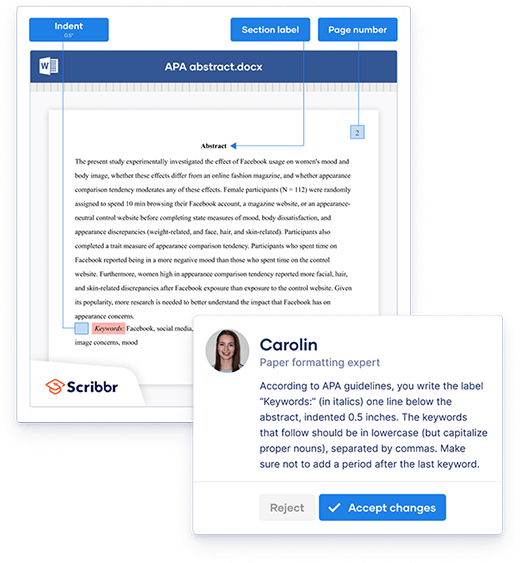
Table of contents
- How to set up APA format (with template)
- APA alphabetization guidelines
- APA format template [Free download]
- Page header
- Headings and subheadings
- Title page
- Abstract
- Table of contents
- Reference page
- Tables and figures
- Frequently asked questions about APA format
How to set up APA format (with template)
APA alphabetization guidelines
References are ordered alphabetically by the first author’s last name. If the author is unknown, order the reference entry by the first meaningful word of the title (ignoring articles: “the”, “a”, or “an”).
Let an expert format your paper
Our APA formatting experts can help you to format your paper according to APA guidelines. They can help you with:
- Margins, line spacing, and indentation
- Font and headings
- Running head and page numbering
- And more
Learn more

APA format template [Free download]
Why set up APA format from scratch if you can download Scribbr’s template for free?
Student papers and professional papers have slightly different guidelines regarding the title page, abstract, and running head. Our template is available in Word and Google Docs format for both versions.
- Student paper: Word | Google Docs
- Professional paper: Word | Google Docs
In an APA Style paper, every page has a page header. For student papers, the page header usually consists of just a page number in the page’s top-right corner. For professional papers intended for publication, it also includes a running head.
A running head is simply the paper’s title in all capital letters. It is left-aligned and can be up to 50 characters in length. Longer titles are abbreviated.
Headings and subheadings
APA headings have five possible levels. Heading level 1 is used for main sections such as “Methods” or “Results”. Heading levels 2 to 5 are used for subheadings. Each heading level is formatted differently.
Want to know how many heading levels you should use, when to use which heading level, and how to set up heading styles in Word or Google Docs? Then check out our in-depth article on APA headings.
Title page
The title page is the first page of an APA Style paper. There are different guidelines for student and professional papers.
Both versions include the paper title and author’s name and affiliation. The student version includes the course number and name, instructor name, and due date of the assignment. The professional version includes an author note and running head.
For more information on writing a striking title, crediting multiple authors (with different affiliations), and writing the author note, check out our in-depth article on the APA title page.
Abstract
The abstract is a 150–250 word summary of your paper. An abstract is usually required in professional papers, but it’s rare to include one in student papers (except for longer texts like theses and dissertations).
The abstract is placed on a separate page after the title page. At the top of the page, write the section label “Abstract” (bold and centered). The contents of the abstract appear directly under the label. Unlike regular paragraphs, the first line is not indented. Abstracts are usually written as a single paragraph without headings or blank lines.
Directly below the abstract, you may list three to five relevant keywords. On a new line, write the label “Keywords:” (italicized and indented), followed by the keywords in lowercase letters, separated by commas.
Table of contents
APA Style does not provide guidelines for formatting the table of contents. It’s also not a required paper element in either professional or student papers. If your instructor wants you to include a table of contents, it’s best to follow the general guidelines.
Place the table of contents on a separate page between the abstract and introduction. Write the section label “Contents” at the top (bold and centered), press “Enter” once, and list the important headings with corresponding page numbers.
Reference page
The APA reference page is placed after the main body of your paper but before any appendices. Here you list all sources that you’ve cited in your paper (through APA in-text citations). APA provides guidelines for formatting the references as well as the page itself.
Creating APA Style references
Play around with the Scribbr Citation Example Generator below to learn about the
APA reference format of the most common source types or generate APA citations for free with Scribbr’s APA Citation Generator.
Generate accurate APA citations with Scribbr
Formatting the reference page
Write the section label “References” at the top of a new page (bold and centered). Place the reference entries directly under the label in alphabetical order.
Finally, apply a hanging indent, meaning the first line of each reference is left-aligned, and all subsequent lines are indented 0.5 inches.
Tables and figures
Tables and figures are presented in a similar format. They’re preceded by a number and title and followed by explanatory notes (if necessary).
Use bold styling for the word “Table” or “Figure” and the number, and place the title on a separate line directly below it (in italics and title case). Try to keep tables clean; don’t use any vertical lines, use as few horizontal lines as possible, and keep row and column labels concise.
Keep the design of figures as simple as possible. Include labels and a legend if needed, and only use color when necessary (not to make it look more appealing).
Check out our in-depth article about table and figure notes to learn when to use notes and how to format them.
Frequently asked questions about APA format
-
Who uses APA Style?
-
APA format is widely used by professionals, researchers, and students in the social and behavioral sciences, including fields like education, psychology, and business.
Be sure to check the guidelines of your university or the journal you want to be published in to double-check which style you should be using.
Cite this Scribbr article
If you want to cite this source, you can copy and paste the citation or click the “Cite this Scribbr article” button to automatically add the citation to our free Citation Generator.
Streefkerk, R.
(2022, August 23). APA Formatting and Citation (7th Ed.) | Generator, Template, Examples. Scribbr.
Retrieved April 14, 2023,
from https://www.scribbr.com/apa-style/format/
Is this article helpful?
You have already voted. Thanks 
Your vote is saved 
Processing your vote…
Word automatically generates a bibliography from the sources you used to write your paper. Each time you add a new citation to your document, Word adds that source so that it appears in the bibliography in the proper format, such as MLA, APA, and Chicago-style.
Add a citation after a quote
-
On the References tab , in the Citations & Bibliography group, click the arrow next to Style.
-
Click the style that you want to use for the citation and source.
-
Click at the end of the sentence or phrase that you want to cite.
-
Click Insert Citation and then select Add New Source.
-
In the Create Source box, type in the citation details, and then click OK.
When you’ve completed these steps, the citation is added to the list of available citations. The next time you quote this reference, you don’t have to type it all out again, just click Insert Citation and select the citation you want to use.

Important: APA and MLA can change their formats, so you’ll want to ensure that these format versions meet your requirements. You can create your own updated version of a style or build custom styles. For more information see Bibliography & Citations 102 – Building Custom styles.
Create a bibliography from your sources
If you want to create a bibliography from your sources, do the following:
-
Click where you want to insert a bibliography. Typically, they are at the end of a document.
-
On the References tab, in the Citations & Bibliography group, click Bibliography.
Similar to the Table of Contents builder in Word, you can select a predesigned bibliography format that includes a title, or you can just click Insert Bibliography to add the citation without a title.
If you want to learn more about using citation placeholders and editing sources, take a look at Create a bibliography. Or, if you want to export your bibliography sources to another computer, check out this post on the Microsoft Word blog.
APA 6th Edition citation style fix procedure.
APA style uses the author’s name and publication date. If you have multiple citations from the same author, there is a known Word bug where the citation generator fills in the publication title when it’s not supposed to. If this happens to you, here’s how to fix the problem:
-
In the Word document, click the citation.
-
Click the down-arrow, and then click Edit Citation.
-
Click the Title checkbox, and then click OK.
APA and MLA can change their formats, so you’ll want to ensure that these format versions meet your requirements. You can create your own updated version of a style or build custom styles. For more information see Bibliography & Citations 102 – Building Custom styles.
If you are using the APA 5th Edition citation style, there’s one issue you should be aware of. APA style uses the author’s name and publication date. If you have multiple citations from the same author, there is a known Word 2010 bug where the citation generator fills in the publication title when it’s not supposed to. If this happens to you, see the section entitled, ‘APA 5th Edition citation style fix procedure below.
Add a citation after a quote
-
In your Word document, click on the References tab in the Ribbon.
-
In the Citations & Bibliography group, click the arrow next to Style.
-
Click the style that you want to use for the citation and source.
-
Click at the end of the sentence or phrase that you want to cite.
-
Click Insert Citation and then select Add New Source.
-
Type in the citation details and then click OK.
When you’ve completed these steps, the citation is added to the Insert Citation button, so the next time you quote this reference, you don’t have to type it all out again.
Create a bibliography from your sources
If you want to create a bibliography from your sources, do the following:
-
Click where you want to insert a bibliography. Typically they are at the end of a document.
-
On the References tab, in the Citations & Bibliography group, click Bibliography.
Much like the Table of Contents builder in Word, you can select a predesigned bibliography format that includes a title or you can just click Insert Bibliography to add the citation without a title.
If you want to learn more about using citation placeholders and editing sources, take a look at Creating a bibliography in Word 2010. Or if you want to export your bibliography sources to another computer, check out this post on the Microsoft Word blog.
APA 5th Edition citation style fix procedure
APA style uses the author’s name and publication date. If you have multiple citations from the same author, there is a known Word 2010 bug where the citation generator fills in the publication title when it’s not supposed to. If this happens to you, here’s how to fix the problem:
-
In the Word document, click the citation.
-
Click the down-arrow and then click Edit Citation.
-
Click the Title checkbox and then click OK.
You can’t automatically generate citations in Word Online. Word Online preserves the bibliography in your document, but it doesn’t provide a way to create one.
Instead, if you have the desktop version of Word, select Open in Word to open the document.

Then follow the steps for Word desktop.
When you’re done and you save the document in Word, you’ll see the table of contents when you reopen the doc in Word Online.


